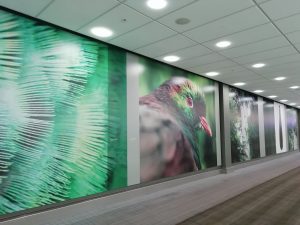
ON A SCALE OF 1 TO 10,
THIS TRIP TURNED OUT TO BE AN 11!
What follows is a compilation of the pictures and comments I posted on Facebook while travelling around New Zealand. I hope it served some of you to learn a bit of vocabulary against the backdrop of this fascinating country. And for non-Facebook members, here it goes again.
SOUTH ISLAND
Stunningly beautiful Kaikoura. A magical corner of the world.
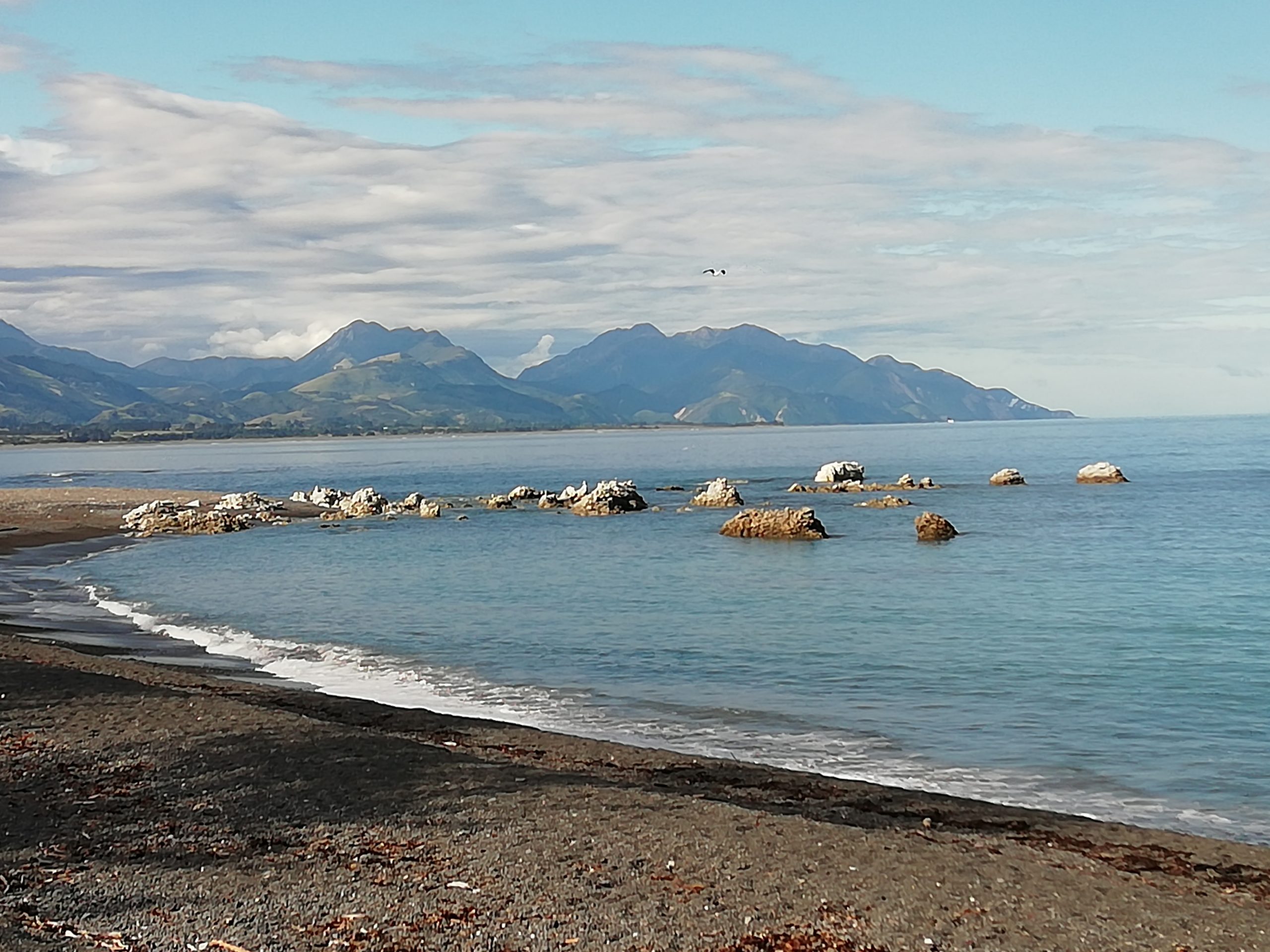
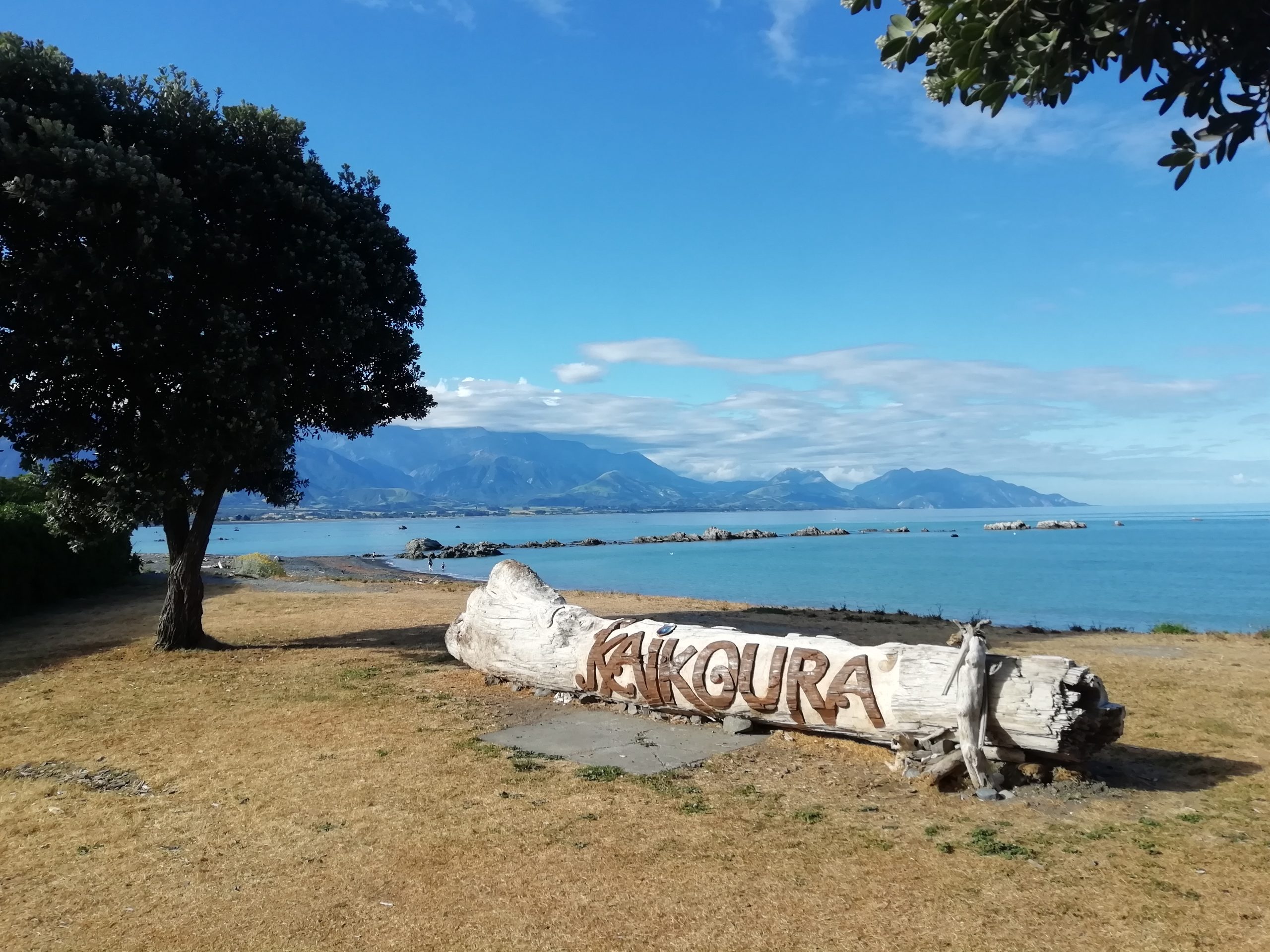
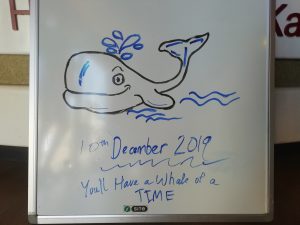
HAVE A WHALE OF A TIME means enjoy yourself.
I certainly did, when we went whale watching that morning.
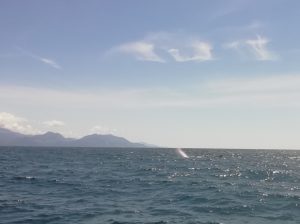
Can you SPOT the whale’s SPOUT? A sperm whale as long as the boat has come to the surface to breathe. That will take her around 10 minutes, after which she will dive again for 40.
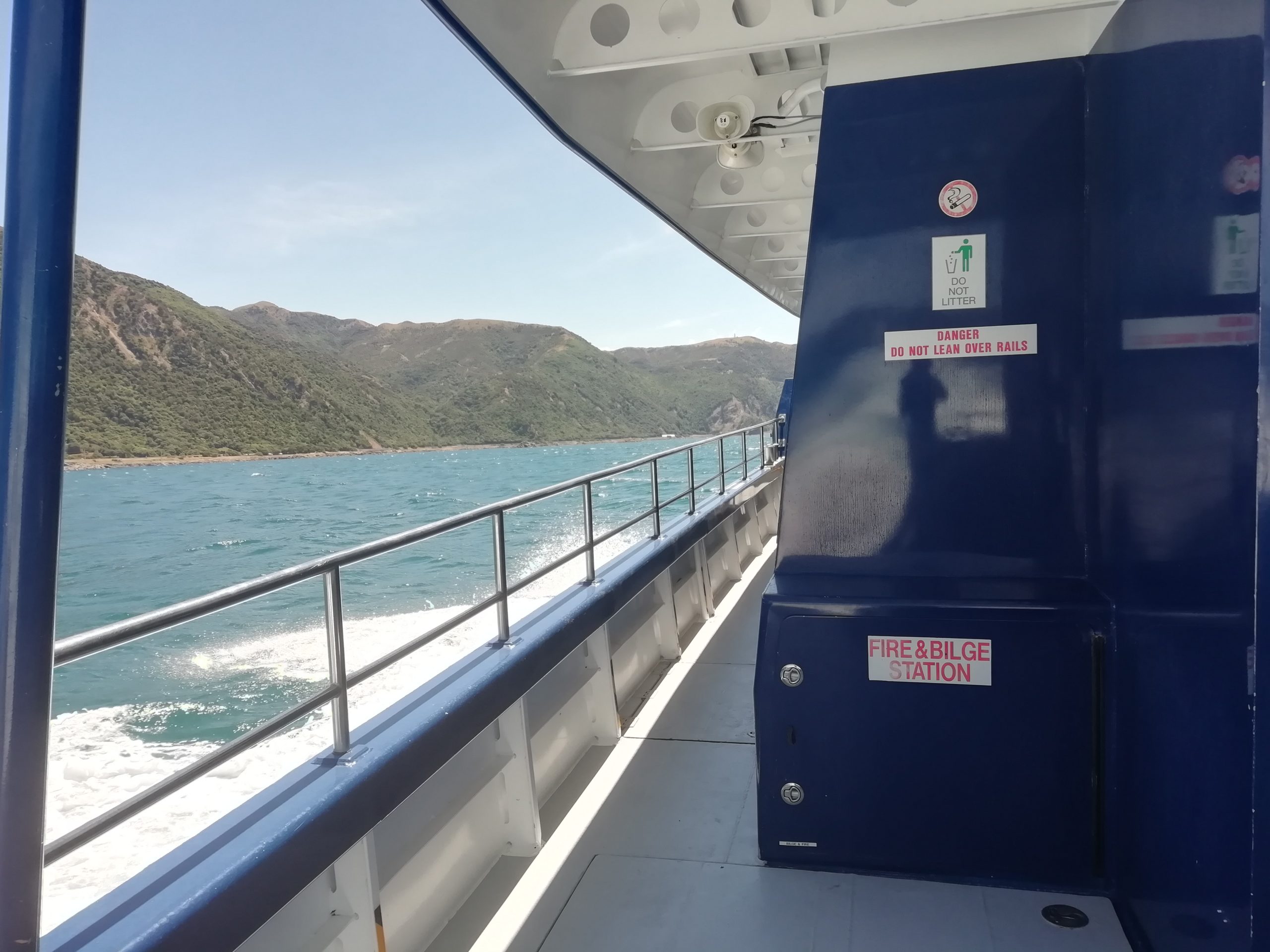
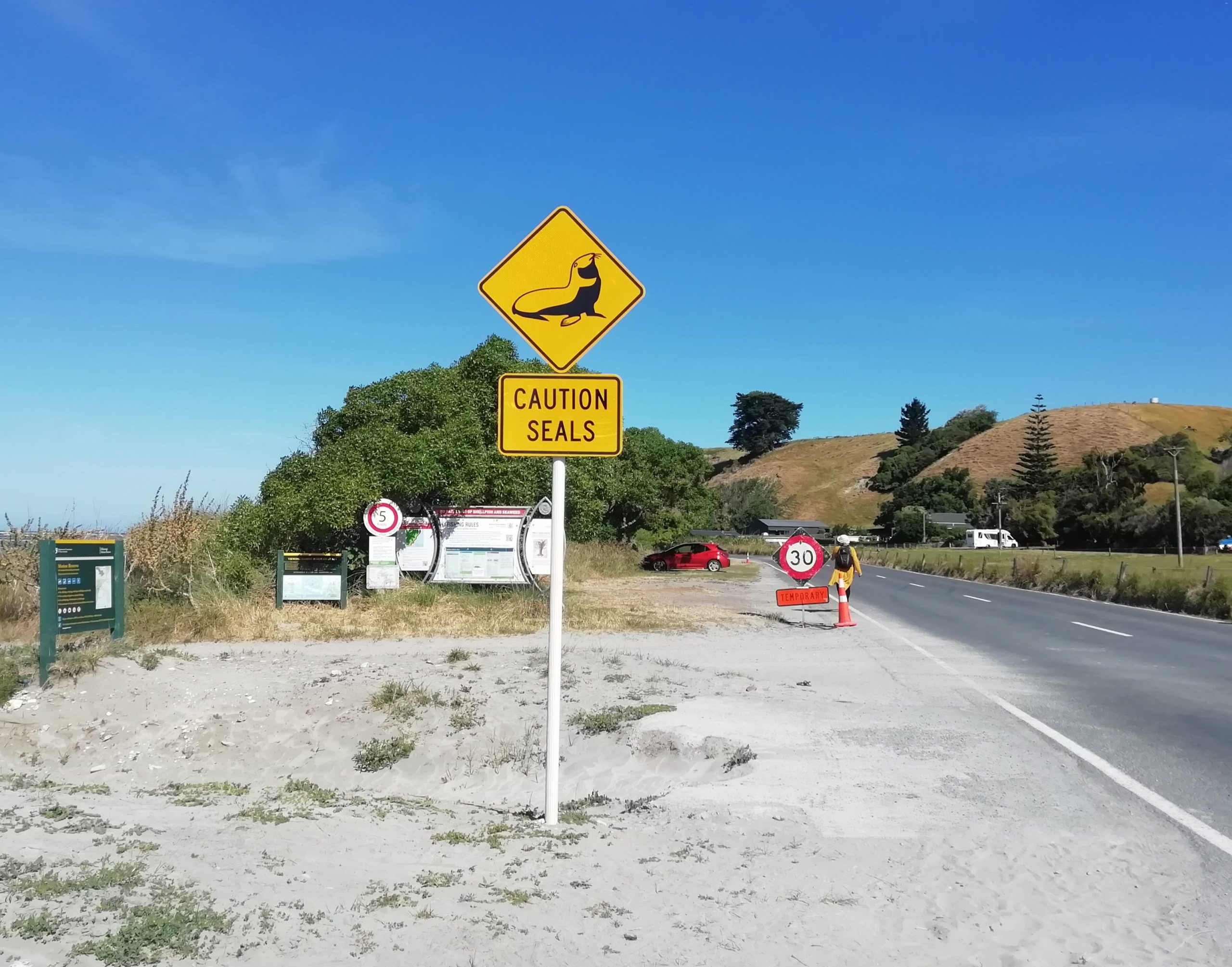
So yes, surprising as it may seem, during HIGH TIDES and ROUGH SEAS seals sometimes rest on the verge of the road.
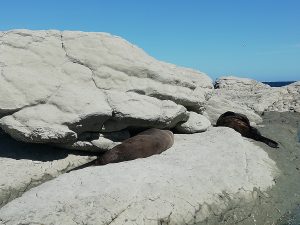
Seals BASKING IN THE SUN*. Signs warn you against getting close to them as they can give very nasty bites and transmit disease. Also, we should respect their space and stay at a reasonable distance.
*to lie in or be exposed to the pleasant warmth of the sun.
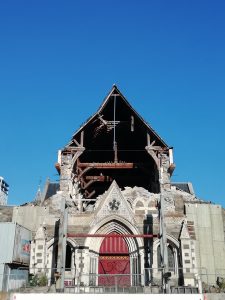
Christchurch cathedral has been standing DERELICT in the middle of the city since the earthquake in 2011. It is said that restoration will begin in 2020.
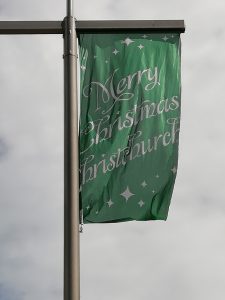
Christmas street pole BANNERS. An ECO-FRIENDLY alternative to lights.
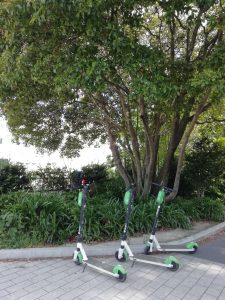 ELECTRIC SCOOTERS are available FOR PUBLIC USE in Christchurch.
ELECTRIC SCOOTERS are available FOR PUBLIC USE in Christchurch.
Download the app. Scan the QR code to UNLOCK the scooter and start riding!
Christchurch Botanical Garden
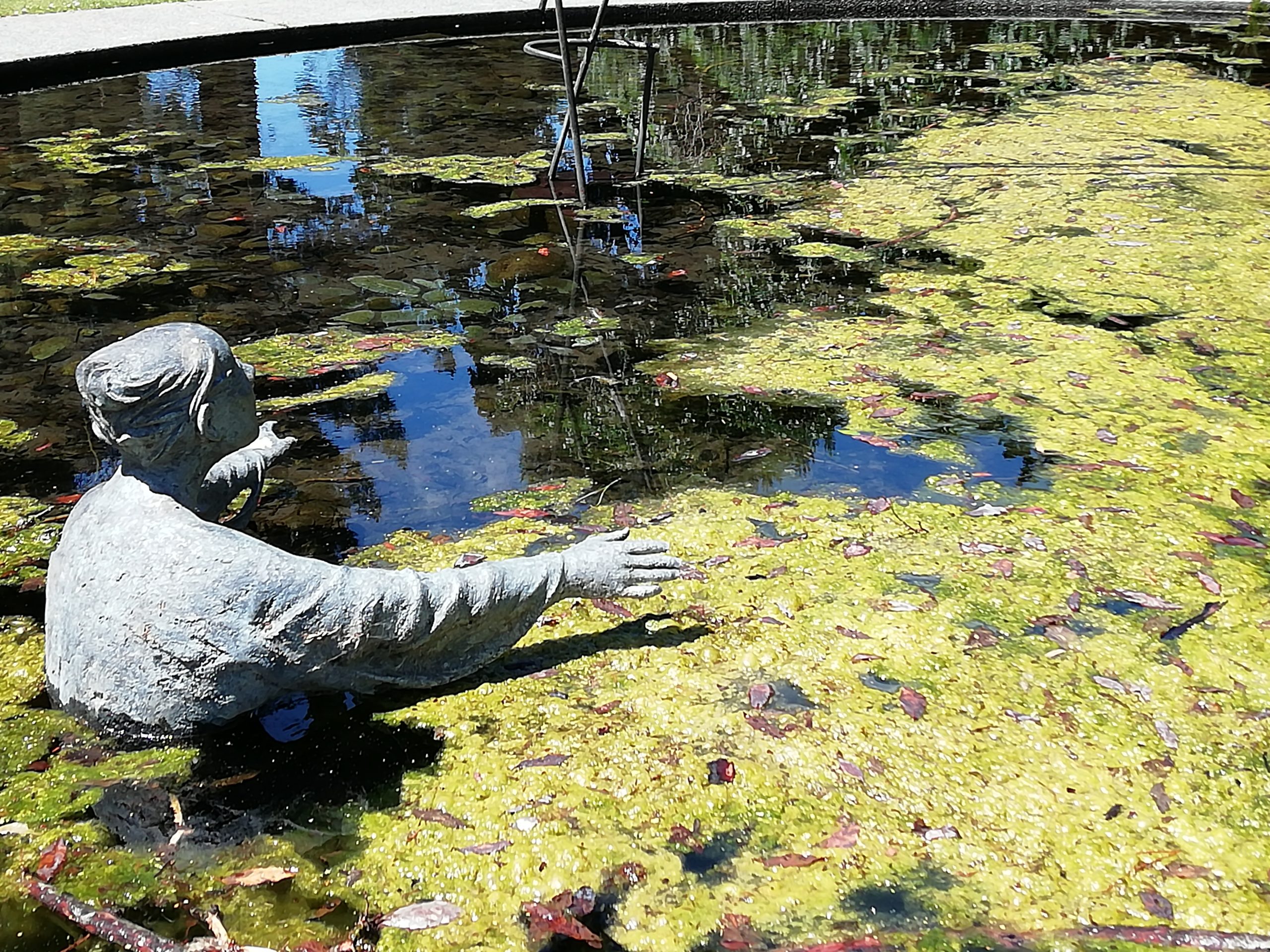
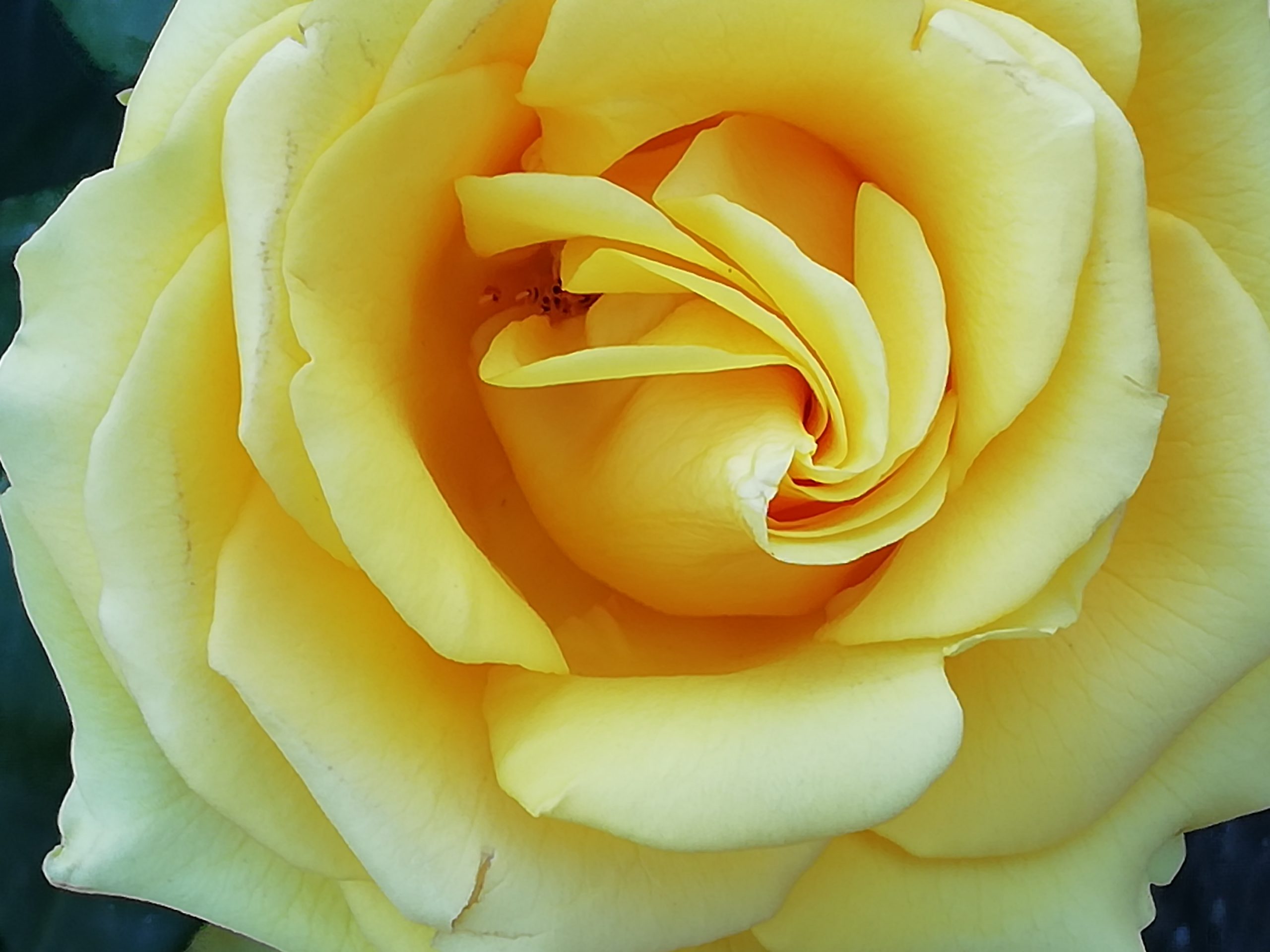
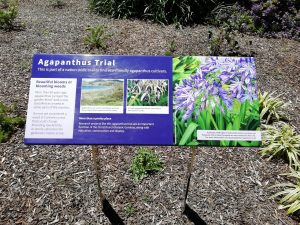
A star in my mum’s garden on the other side of the world, Agapanthus is considered a WEED* in some parts of New Zealand.
* unwanted plant that grows in competition with the cultivated ones.
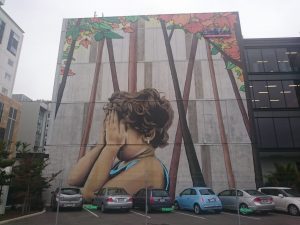
A small sample of Christchurch’s VIBRANT STREET ART SCENE
Most of these mural pics* were taken for me by my friend Pascal to whom I am very grateful.
Pascal Aeby’s professional website:
https://nature-emotions.ch/
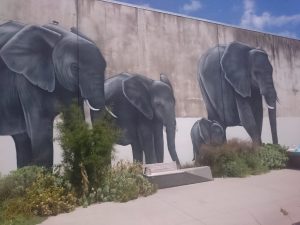
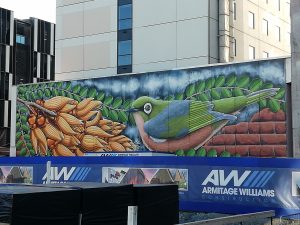
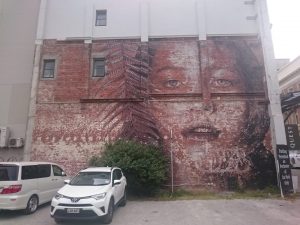
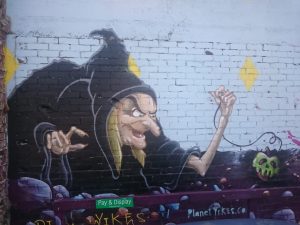
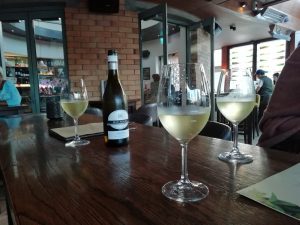
What better way to end a day of sightseeing than having a glass of NZ white wine in good company?
On that note, a WINE GLASS and a GLASS OF WINE… not the same thing.
A wine glass is a glass for drinking wine, not necessarily full. Make sure you order the second.
Aoraki – Mount Cook National Park
Hooker Valley walk to Hooker lake.
Hoping to CATCH A GLIMPSE OF Mt Cook but it wasn’t on the cards for that day. Here are a few pictures I took there and along the way.
* see something for a brief time.


Don’t be mistaken by the suspension bridge sign, someone TOOK THE TROUBLE TO* erase the number 2 before the 0.
* If you take the trouble to do something, you do something which requires a small amount of additional effort.
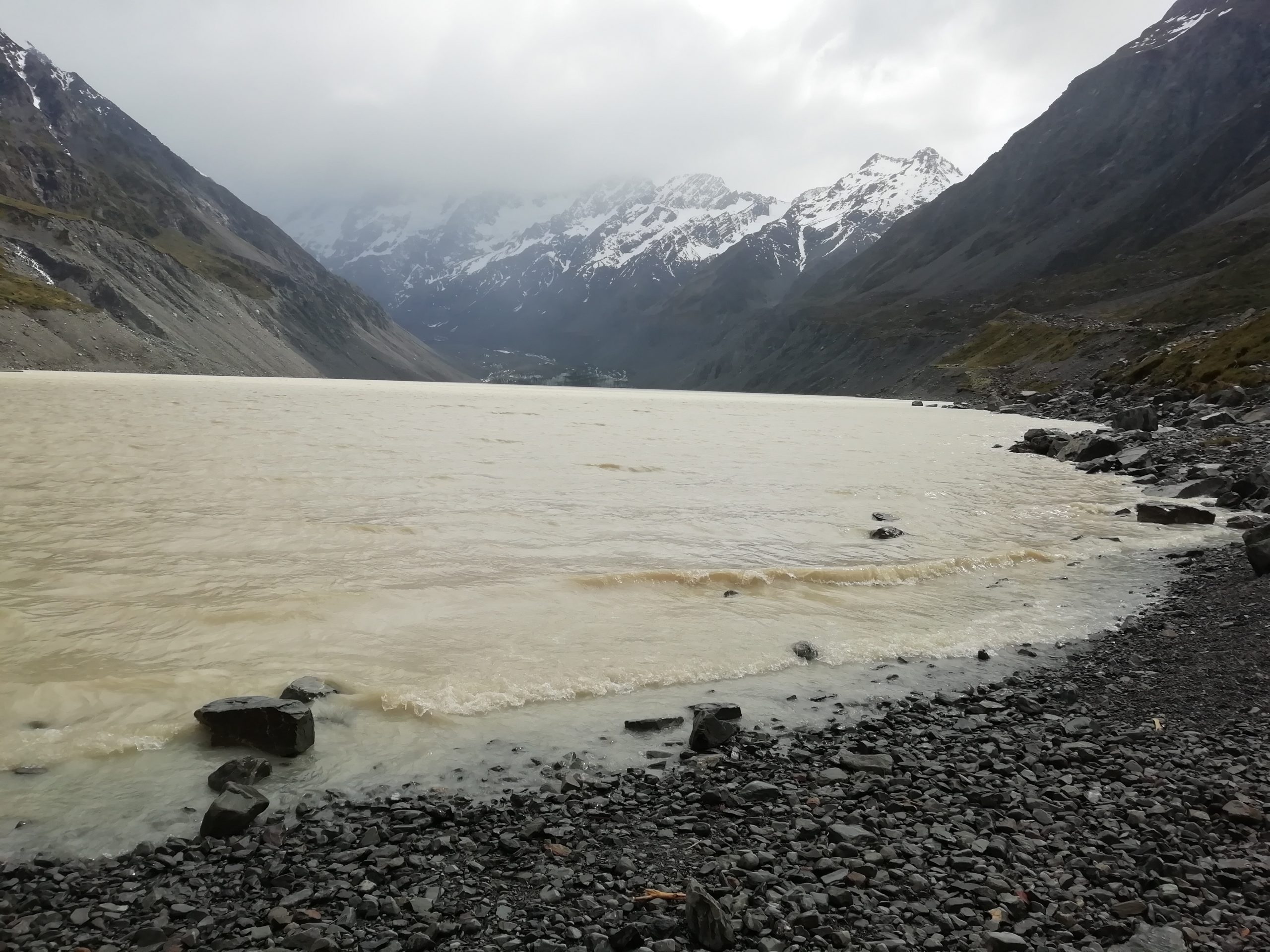
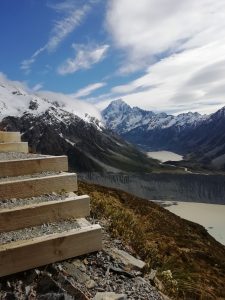 2,200 steps up to Sealy TARNS*.
2,200 steps up to Sealy TARNS*.
Totally worthwhile.
* Tarn: A small mountain lake surrounded by steep slopes.
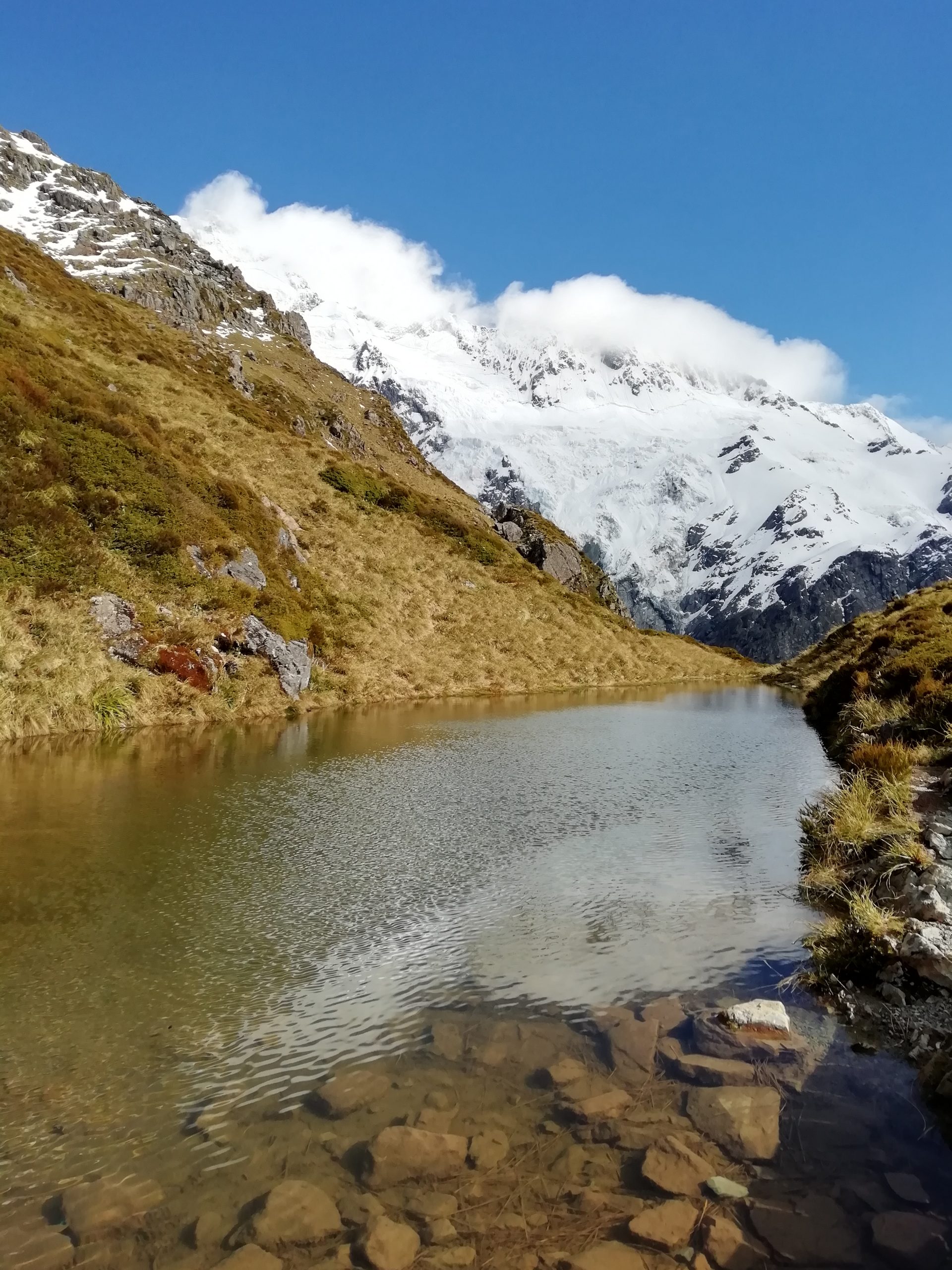
Majestic Aoraki Mount Cook!
View from Sealy Tarns.
(Aoraki, its Maori name, means cloud piercer)
First climbed on Christmas day, 1894 by three New Zealanders (Jack Clarke, Tom Fyfe and George Graham) who were SPURRED INTO ACTION* when they heard that the American climber Edward Fitzgerald was on his way to New Zealand to conquer the summit.
* Spur into action: something encourages you to do something.
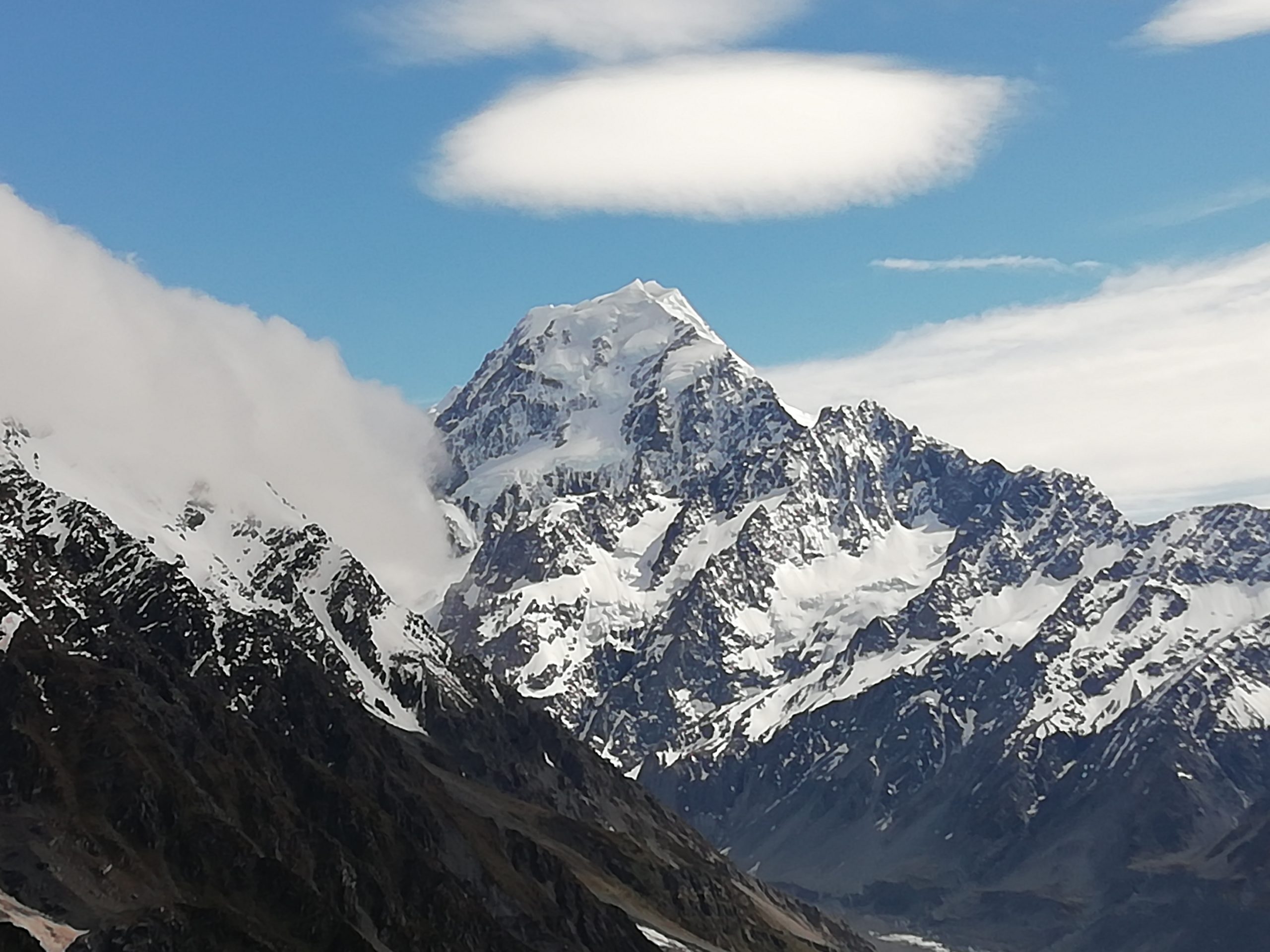
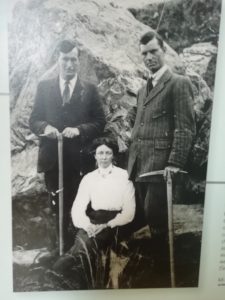
Australian climber Frida Du Faur DEFIED* SOCIAL CONVENTIONS by reaching the summit of Aoraki Mt C
ook in 1910 in the company of 2 male guides and without a CHAPERONE**.
* Challenged
** Chaperone: a person who accompanied an unmarried girl in public.
Glacial sediment gives Lake Pukaki its distinctive turquoise colour.
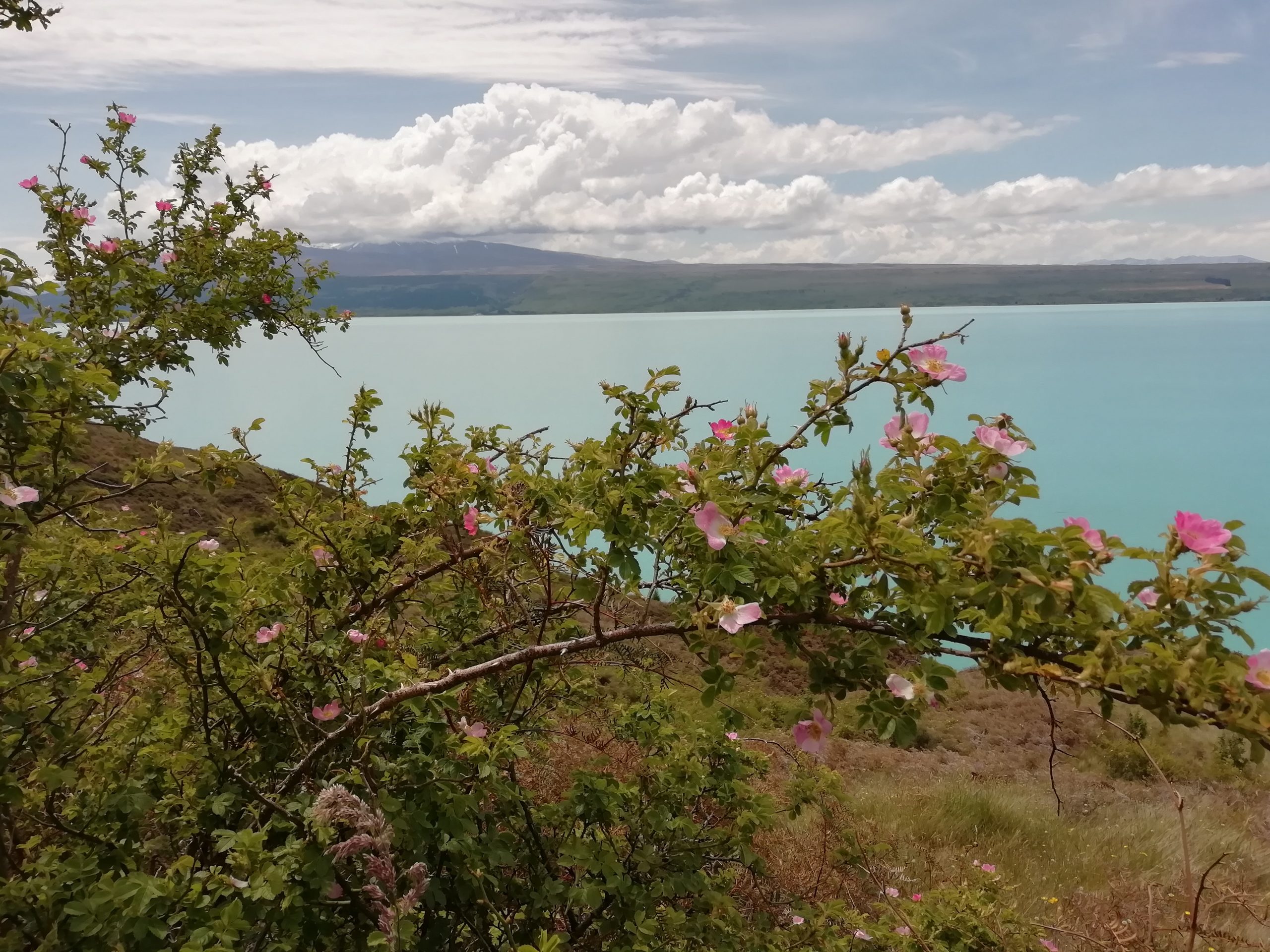
Milford SOUND* is actually a FJORD**.
* Sound: the result of the sea invading a river valley. It is an ocean inlet and wider than a fjord.
** Fjord: the result of glaciers carving a valley, then receding
When the first European settlers arrived in New Zealand, it was mistakenly named as a sound and it so remains.
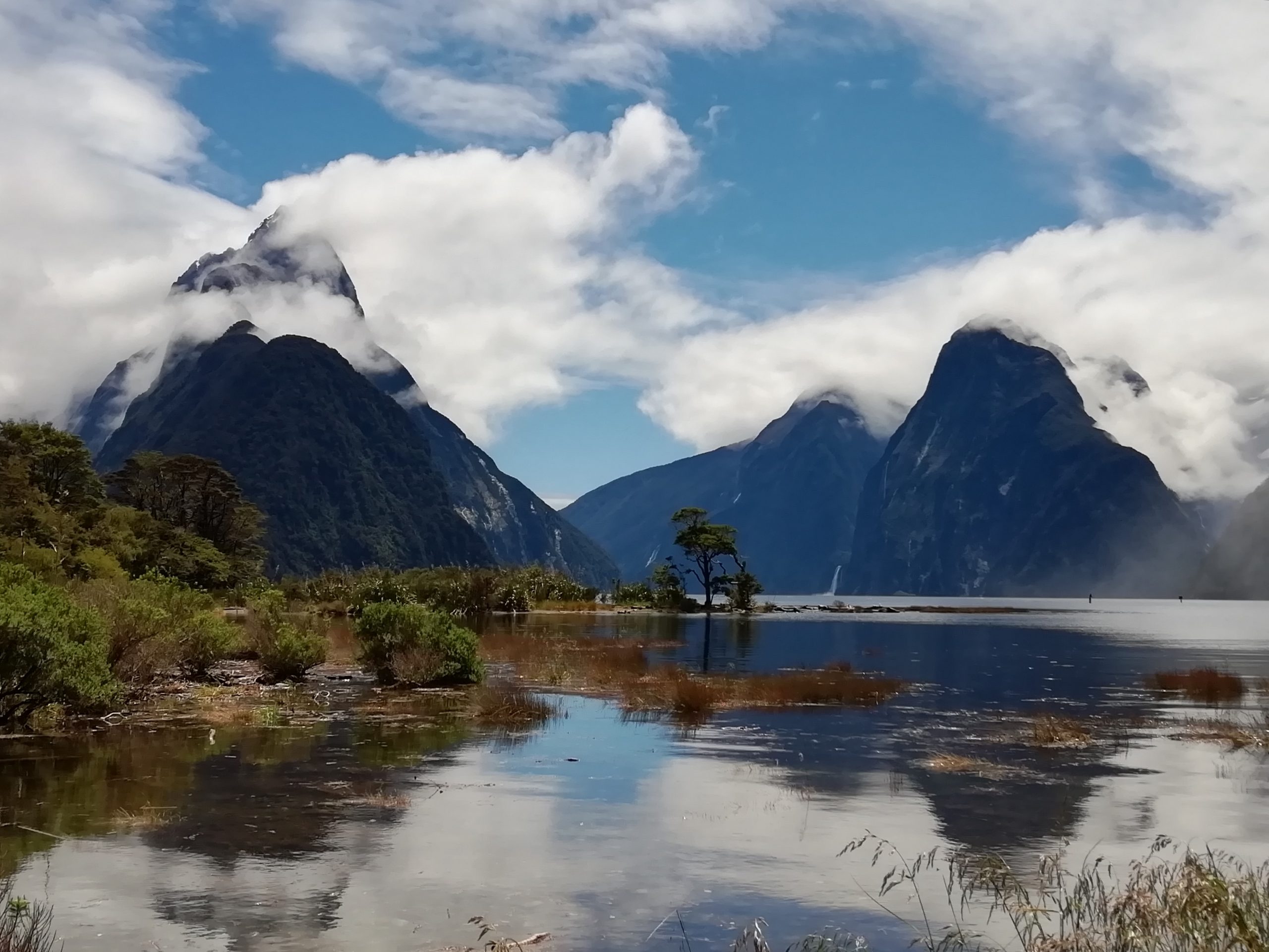

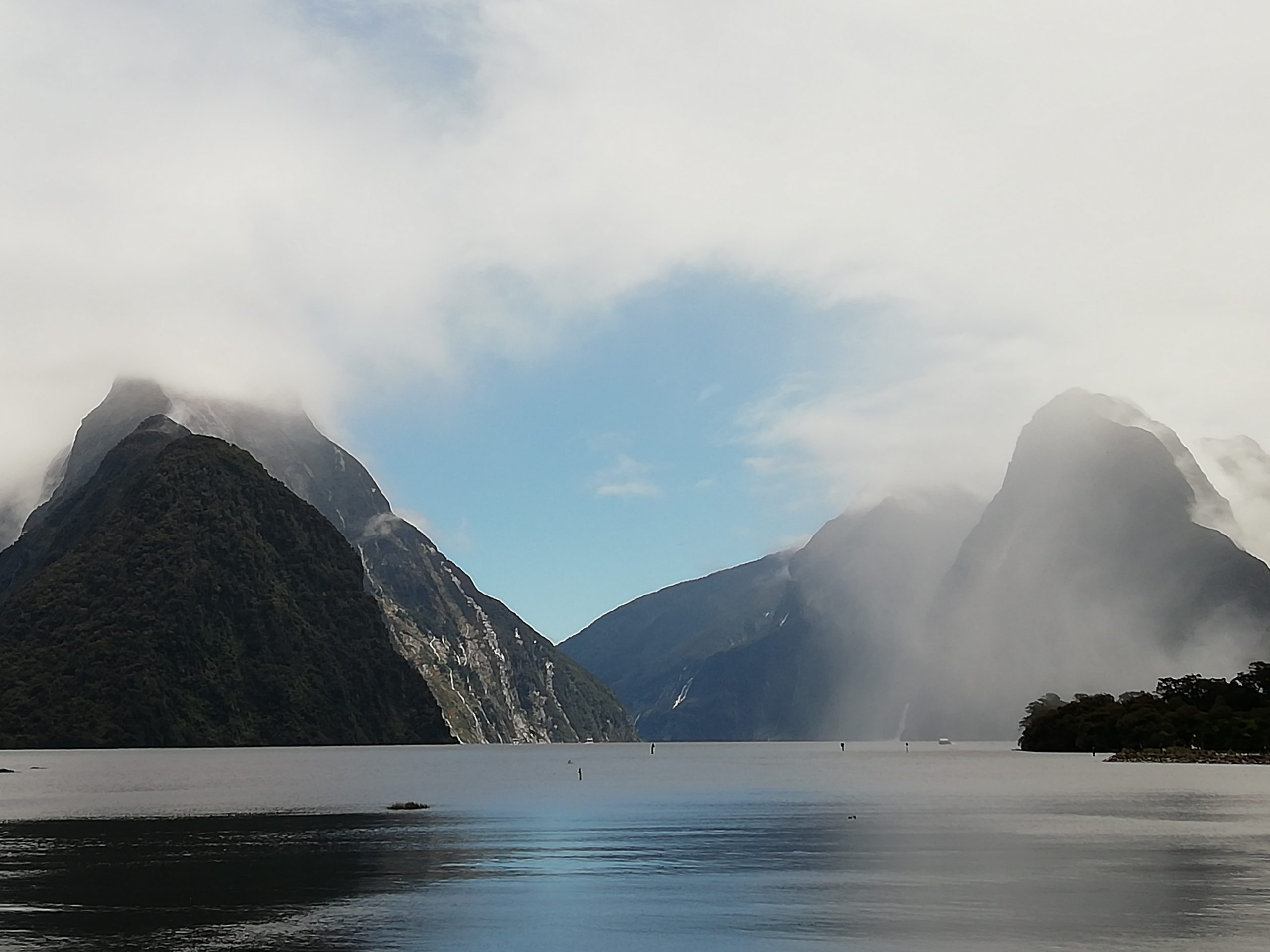
A KEA, the only alpine parrot in the world, perched on the rear-view mirror.
Native to New Zealand and a bit of a trouble maker, they say. They are known for their intelligence and they can team up to achieve certain objectives, for example, to NICK* something.
*Nick: steal
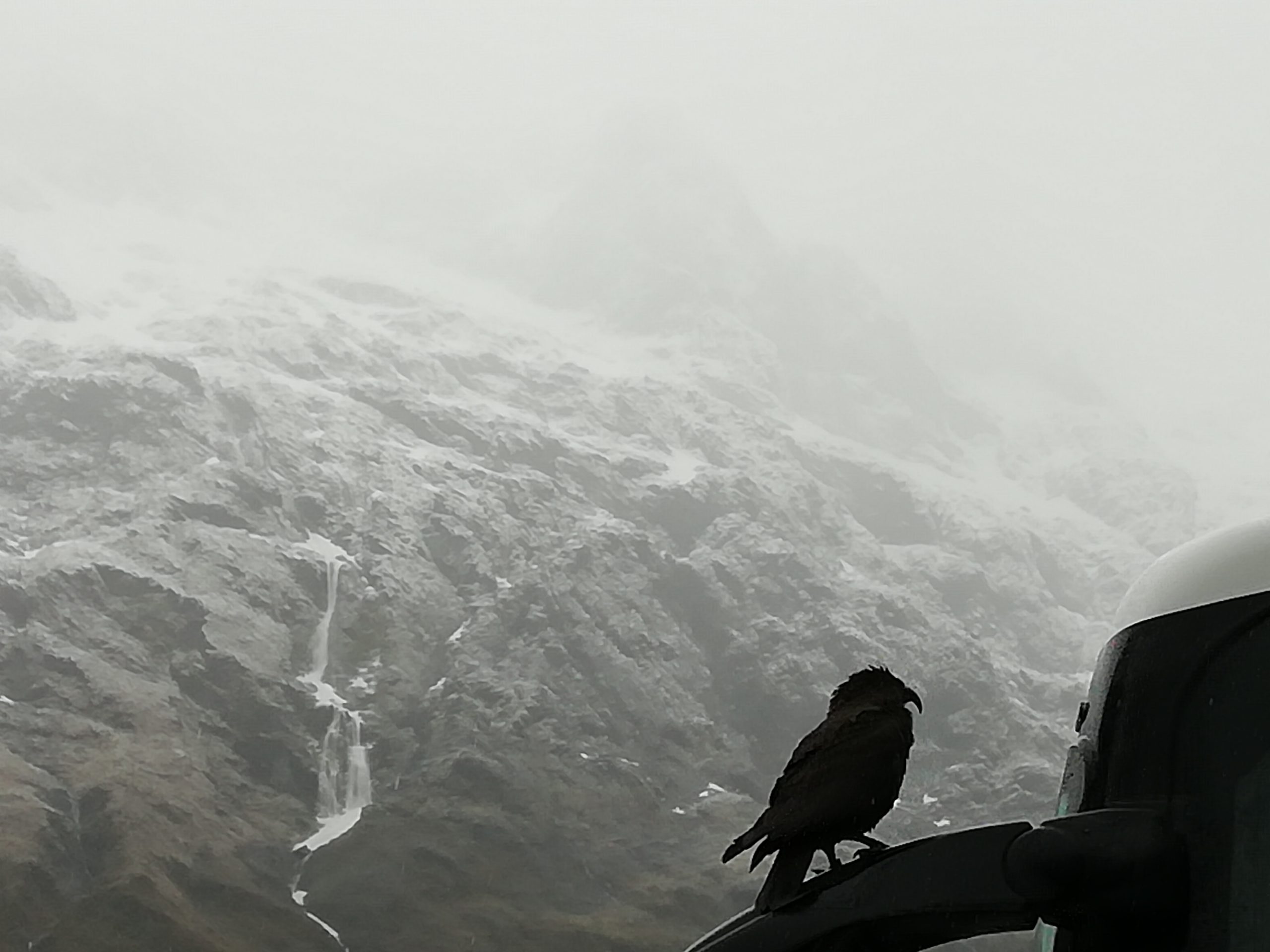
QUEENSTOWN, the mecca for ADRENALINE JUNKIES*
The town itself is a bit of a TOURIST TRAP** but its setting is spectacular, on the shores of Lake Wakatipu, the longest in New Zealand.
* Adrenaline junkies: people that crave adventure and risk. Also known as sensation seekers.
** Tourist trap: a place packed with tourists where prices are a lot higher than normal.
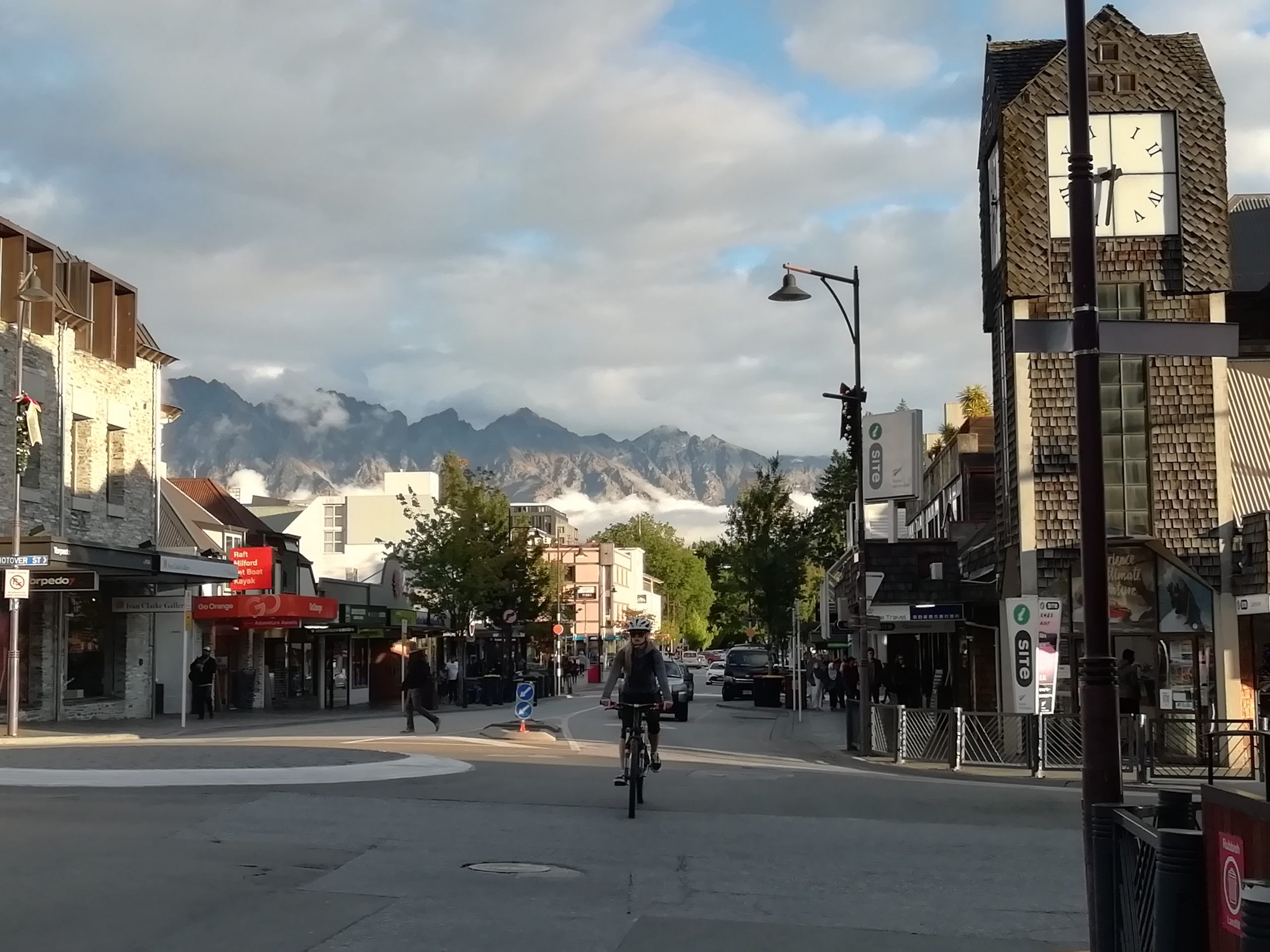
In the background of the third picture, the Remarkables, one of the film locations for Lord of the Rings.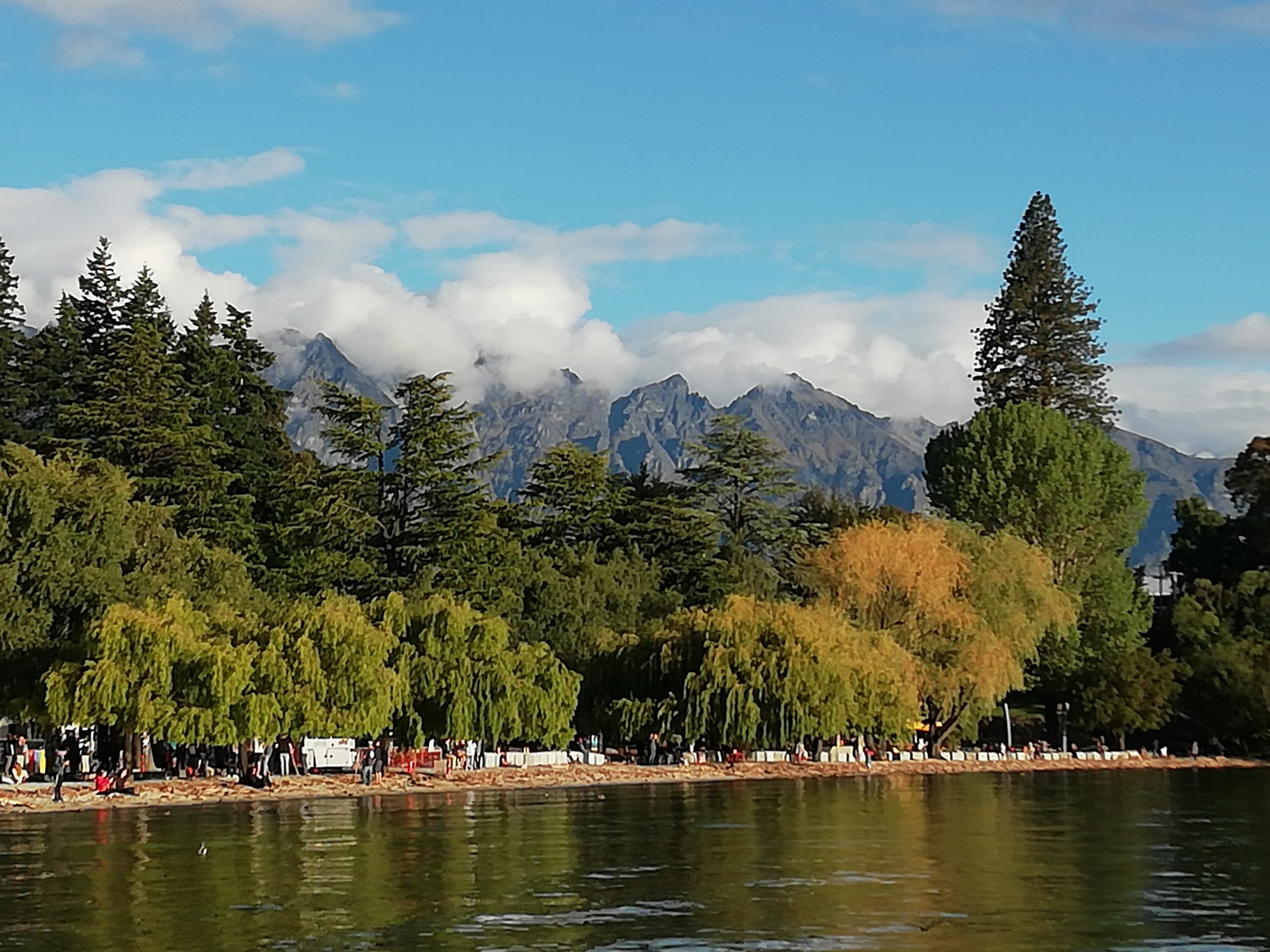
The famous Roy’s Peak LOOKOUT*, Wanaka.
One of the most Instagrammed pictures in NZ, which translates into a very busy hike if done in the morning. I recommend the afternoon/evening walk if it’s summertime. At first, you meet HORDES** of people coming down but eventually, there is only the odd person and the place acquires a new dimension.
* Lookout: viewpoint
** Hordes: in large numbers
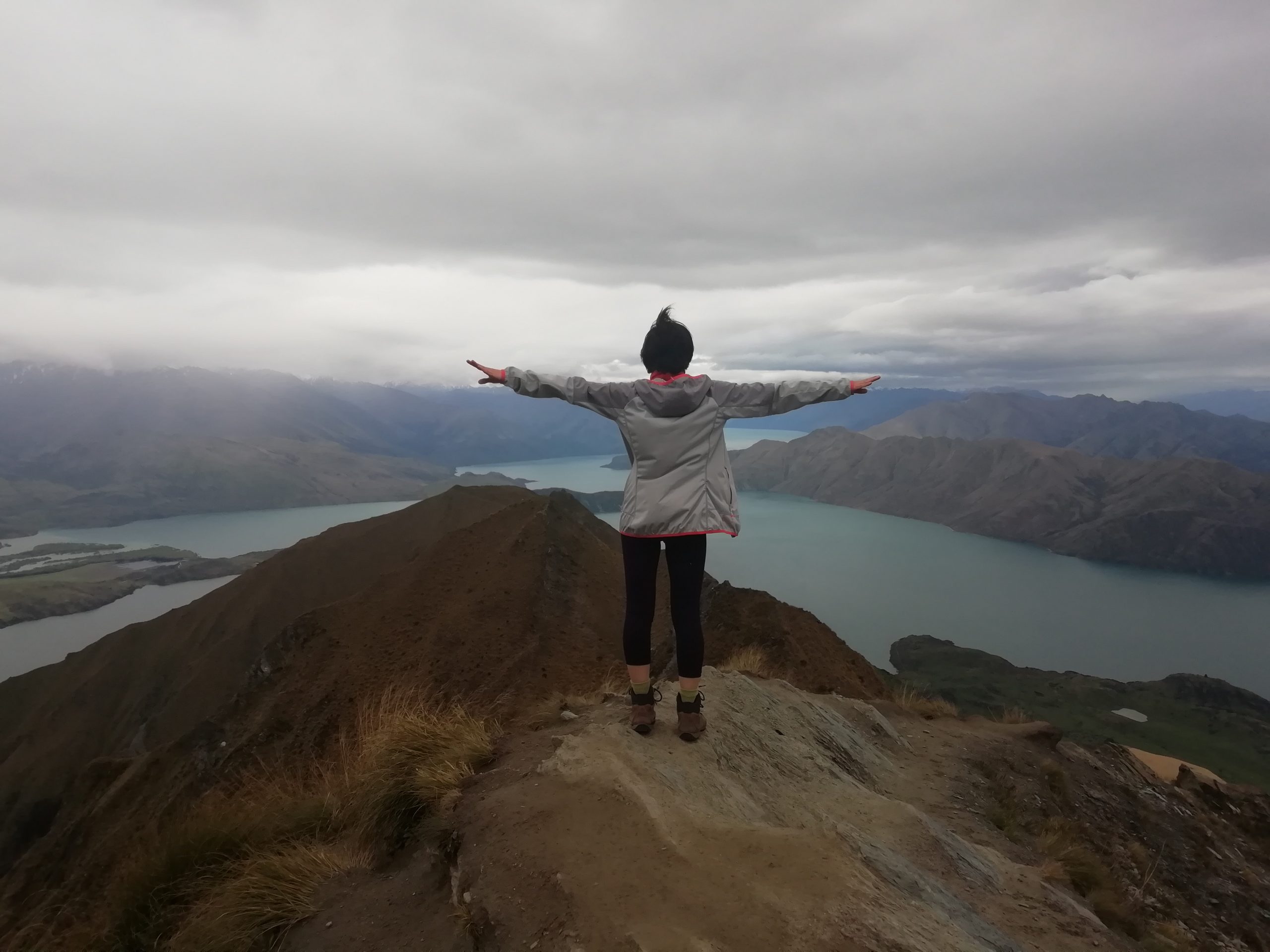

What a fluffy little lamb!
Merino wool is in HIGH DEMAND* and high-quality pricey ponchos are all the rage.
*Desired by many people.

A MUST-SEE in Wanaka:
The Wanaka willow tree.
On a misty day and more submerged in the water than it usually is, due to the recent floods.
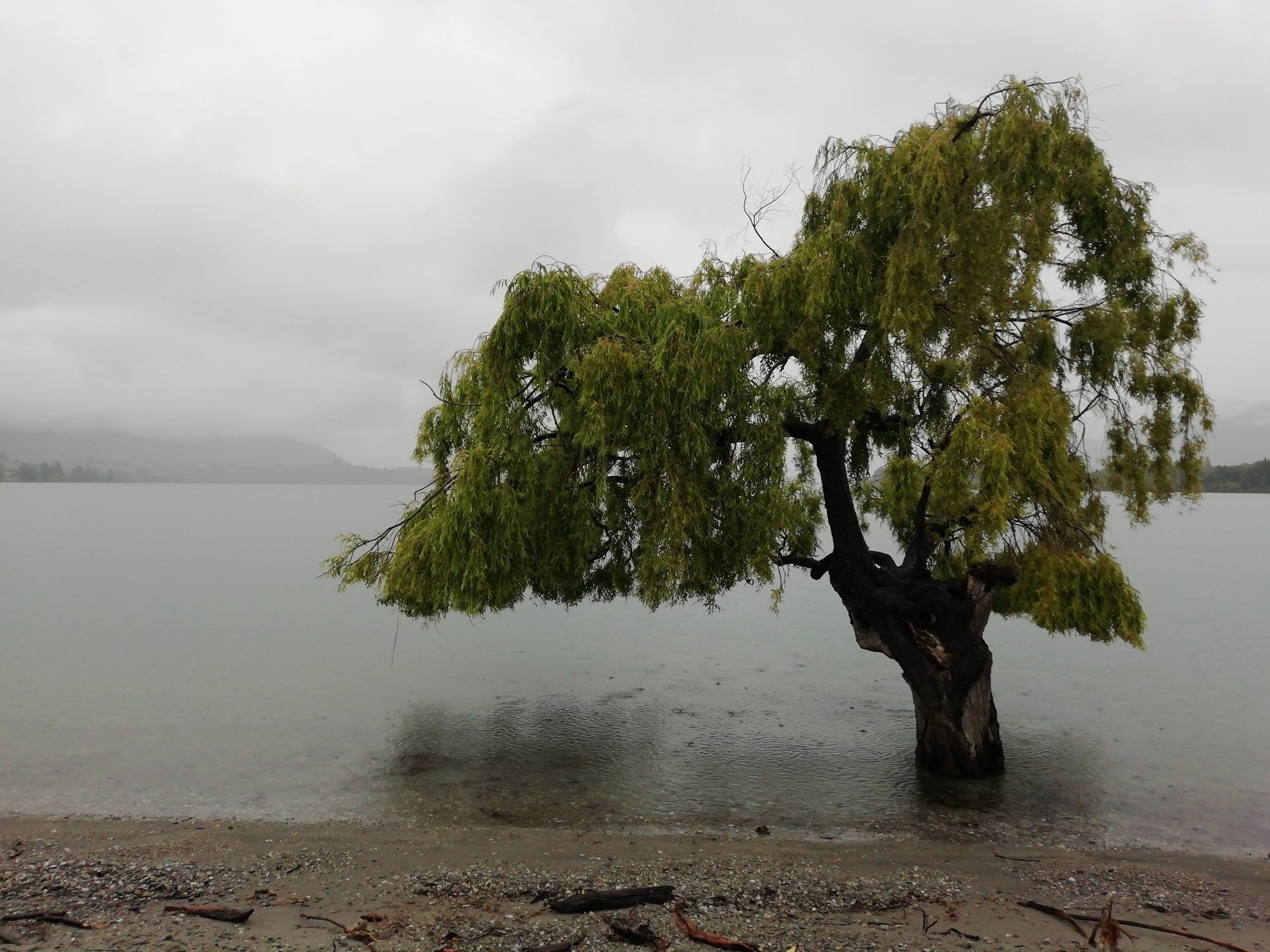
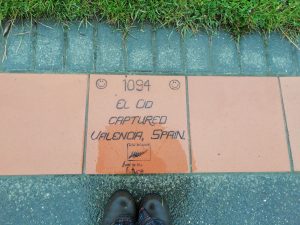
Near the lakefront, a bit of Spanish history in Wanaka’s millennium tiles path that displays significant dates from over 2000 years of history.
It was COMING DOWN* that morning so, if you add that to the flooded shore, the result is soaking wet boots, feet and trousers. All worth it.☔?☔
* Raining a lot.
A LANDSLIDE* caused by heavy rain led to a road closure on the West coast. I had to reroute my travel plans and go up the East coast missing Fox glacier an a couple of other spots in that area.
But THERE IS ALWAYS A SILVER LINING**, isn’t there?
In this case, stopping at Kaikoura again. Here are some more pictures of this stunning corner of the world.
* A collapse of earth or rock from a mountain.
** The good side of something that might seem gloomy on the surface. Short for every cloud has a silver lining.
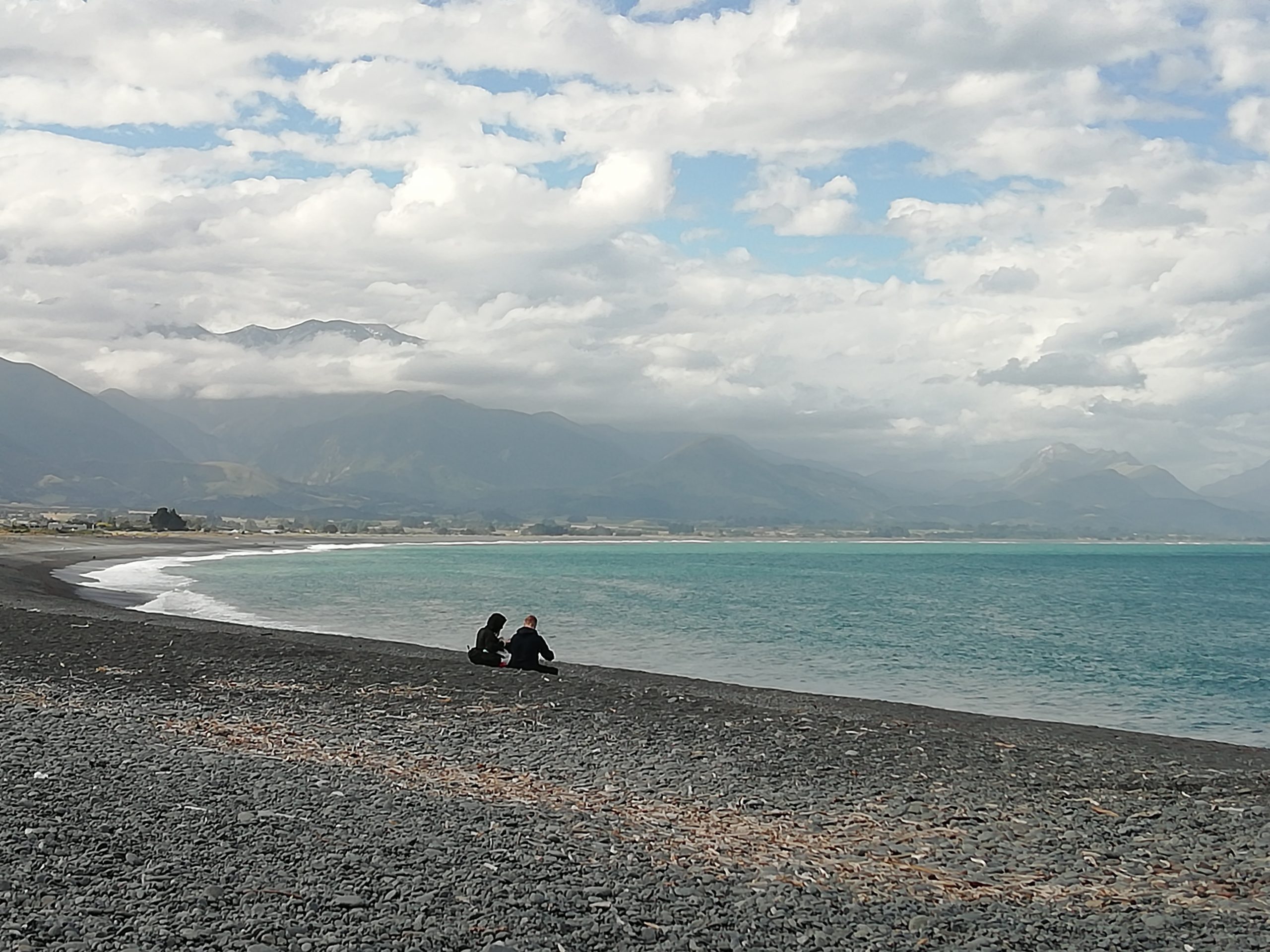
I HAD A BLAST* sea kayaking in Abel Tasman to get a closer look to a seal colony in Adele island wildlife sanctuary.
* Had a great time.
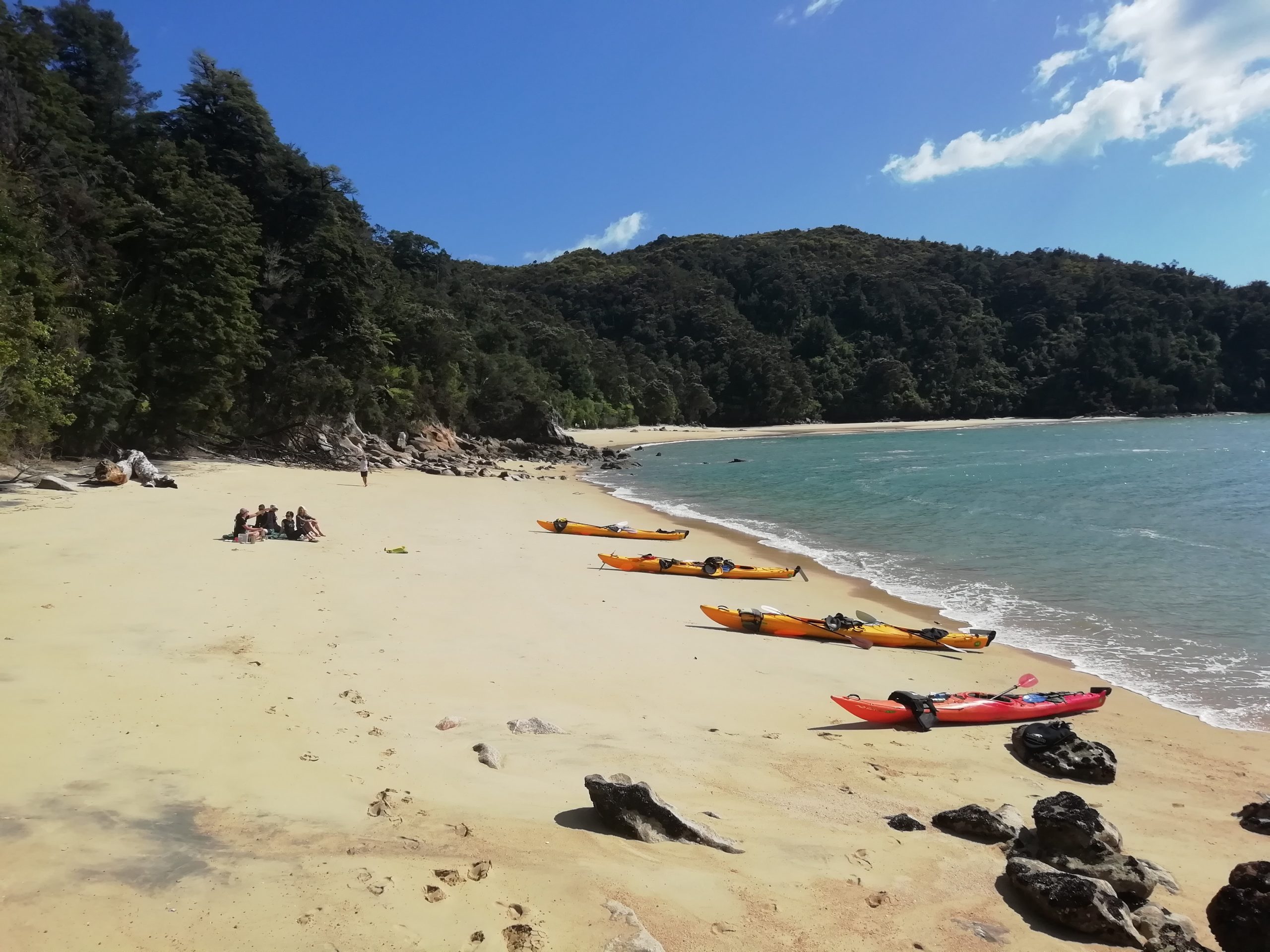
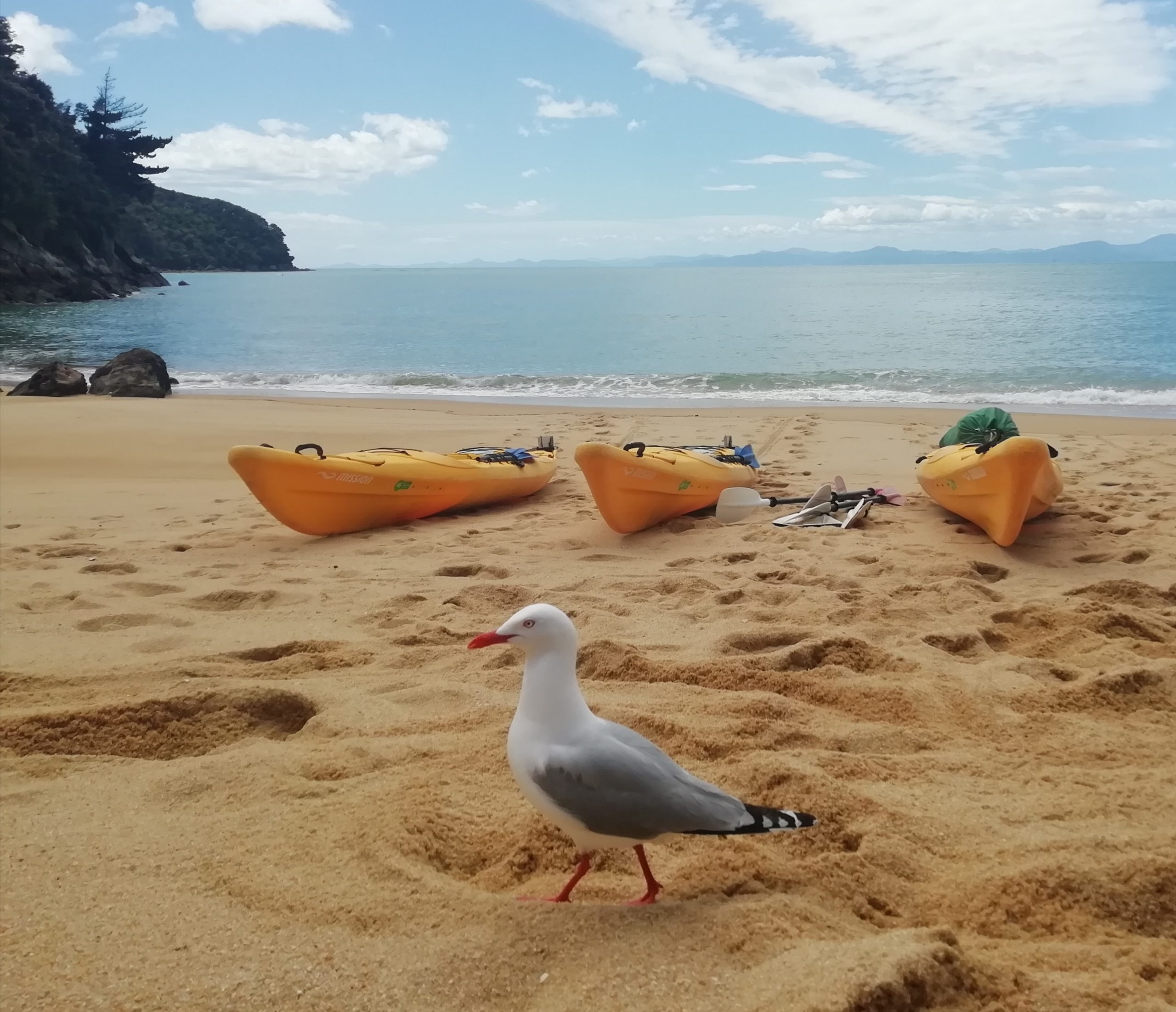
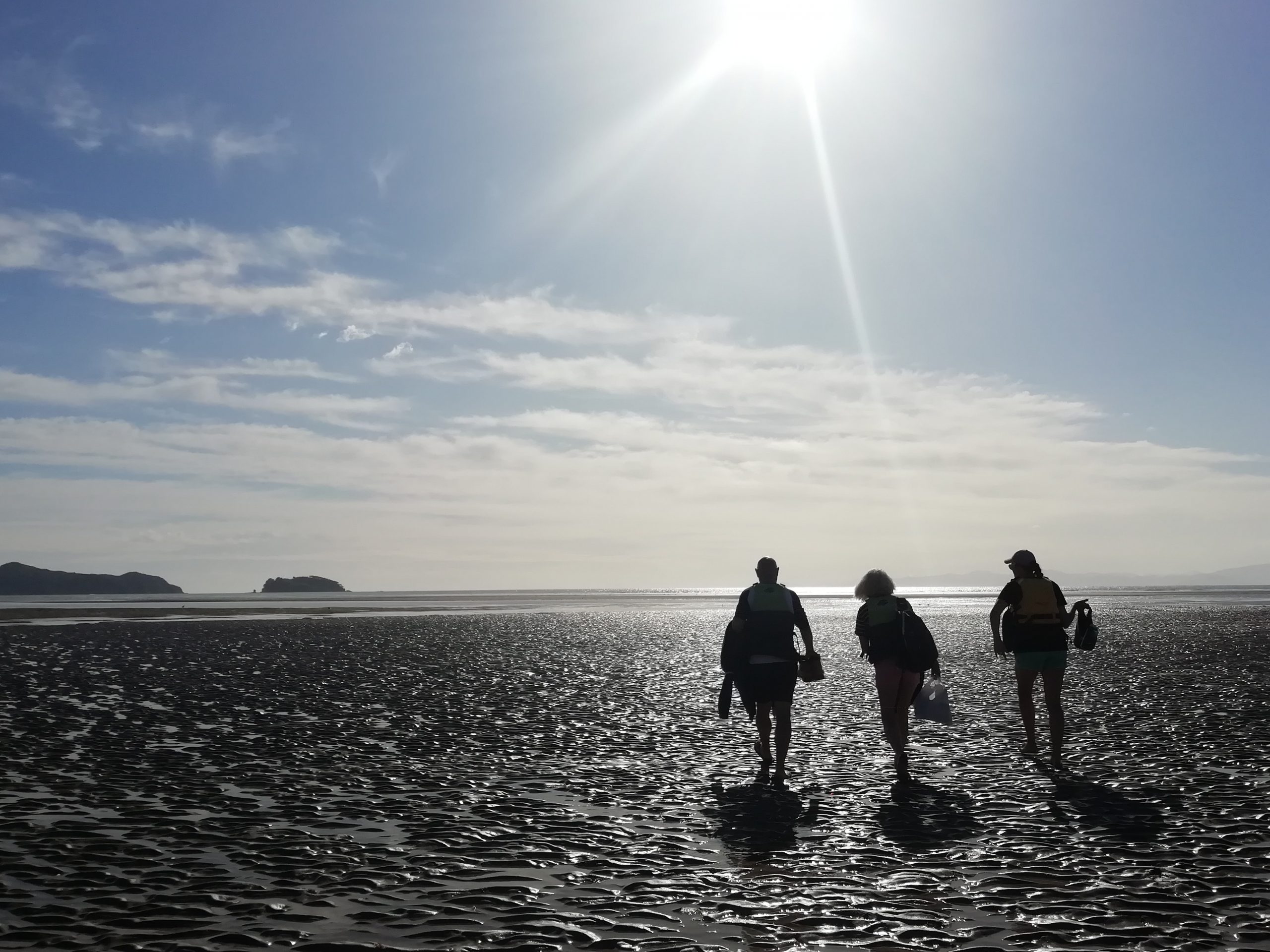
Abel Tasman National Park, where predator control is being UNDERTAKEN* to protect the park’s threatened birdlife. They are using trapping networks but also aerial pet control systems.
* to do a task or a job that will probably take a long time and accept responsibility for it.
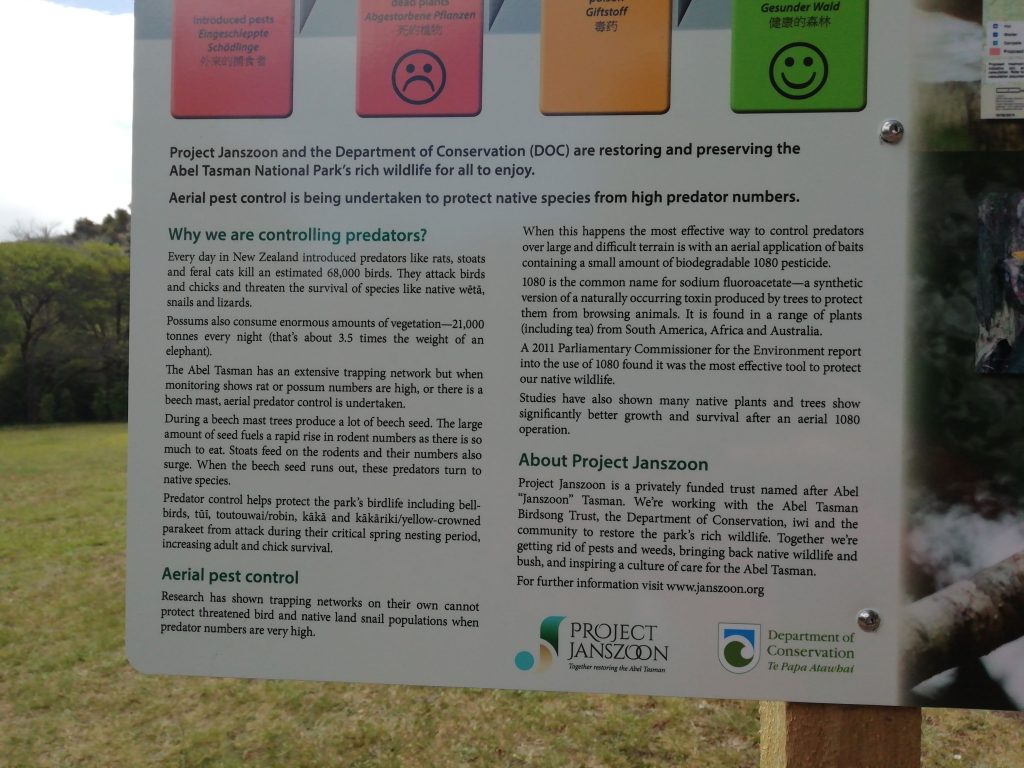
Massive FERNS! ?
New Zealand is home to more than 100 species of native ferns.
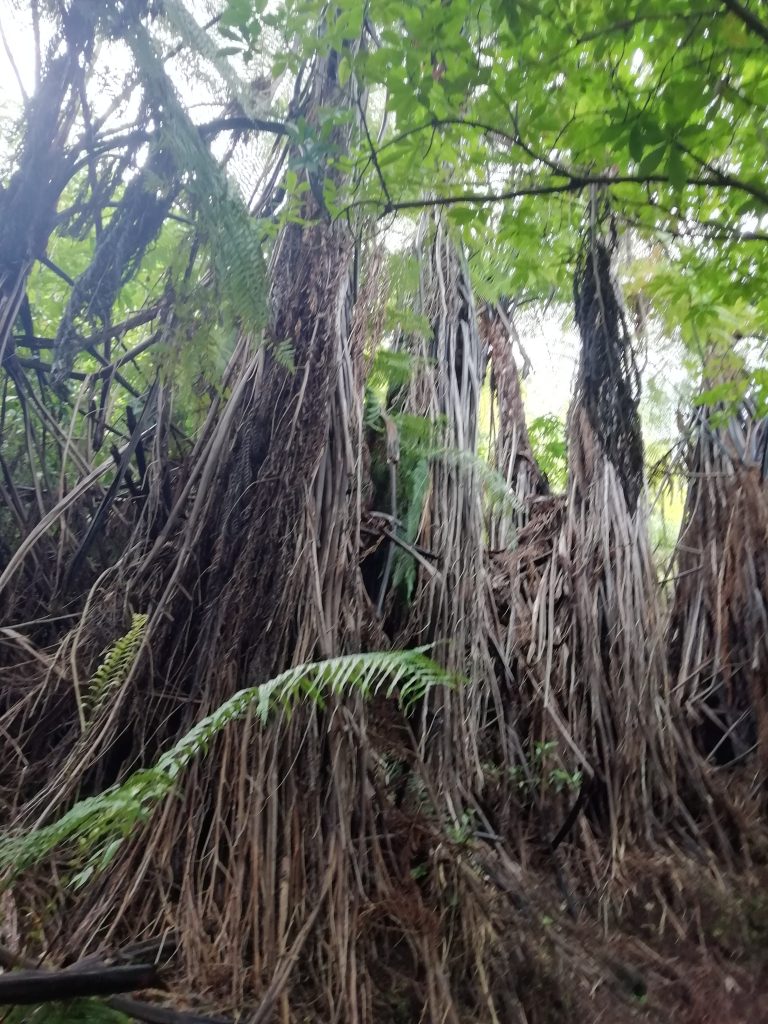

Some pictures of the ferry crossing from Picton, through the Queen Charlotte Sound and across the Cook Strait into Wellington harbour.
SURPRISING FACT: when passengers disembark in Wellington they aren’t any further north than when they started.
* to say goodbye to someone you will not see for a long time.
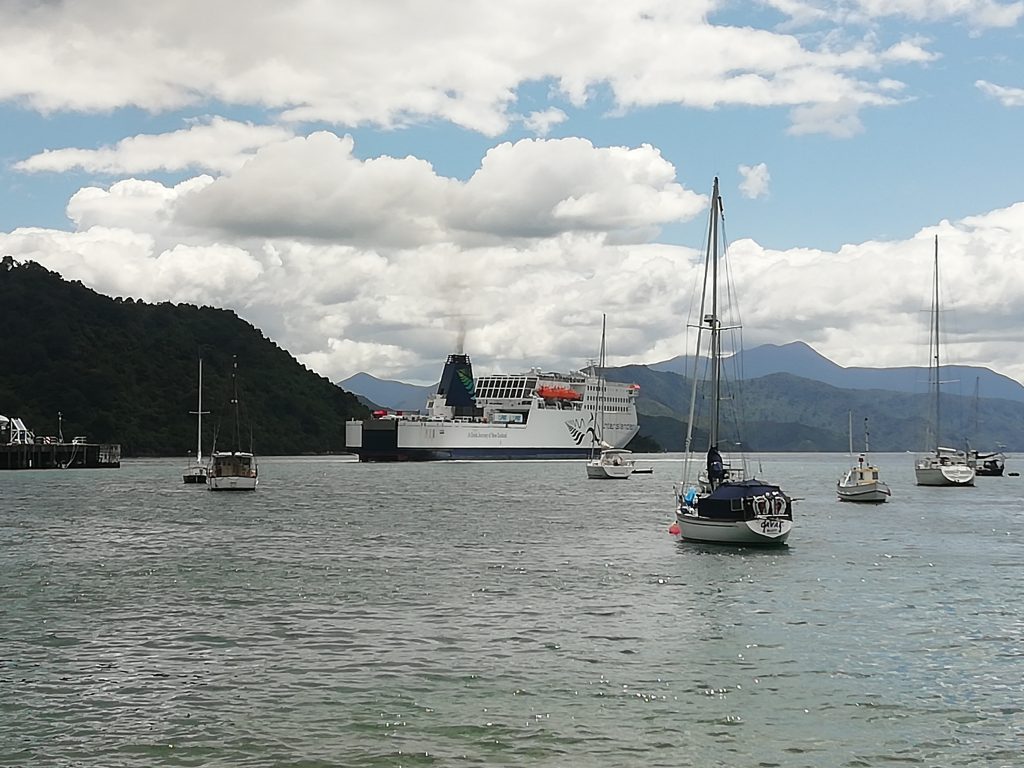
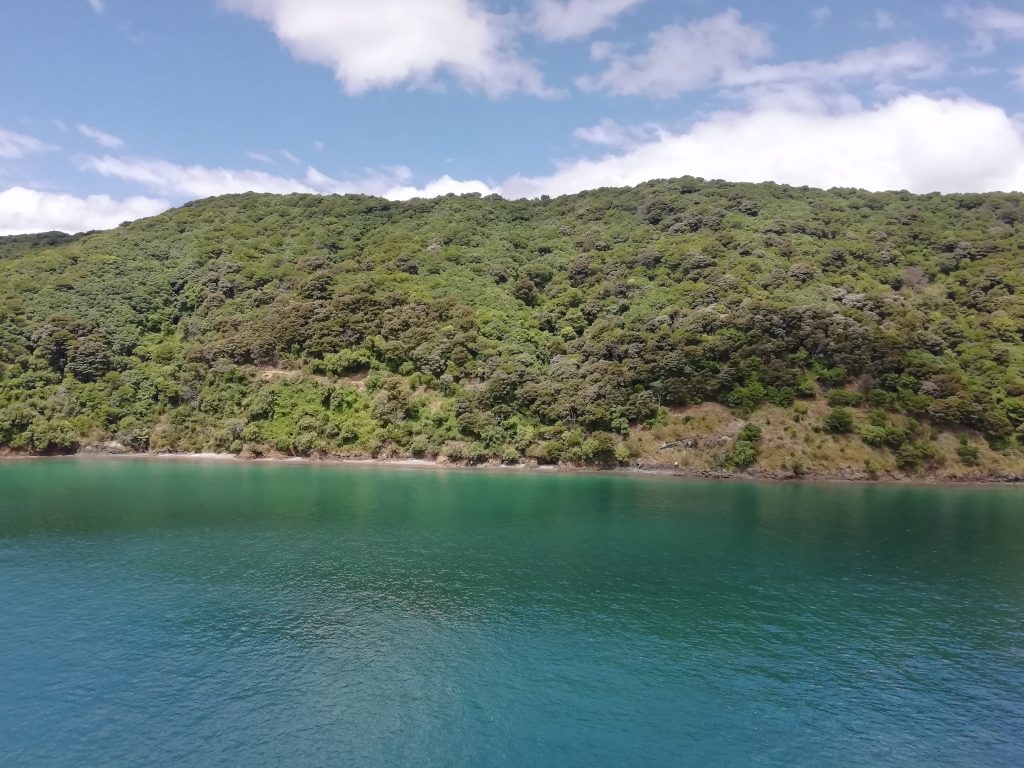
SOLACE* in the wind. An iconic landmark in Wellington’s waterfront.
* something that gives you comfort when you are upset.

Visiting a friend in New Plymouth.
So fortunate to be shown around the Taranaki province and MINGLE* with the locals.
* to be with other people, especially talking to them.
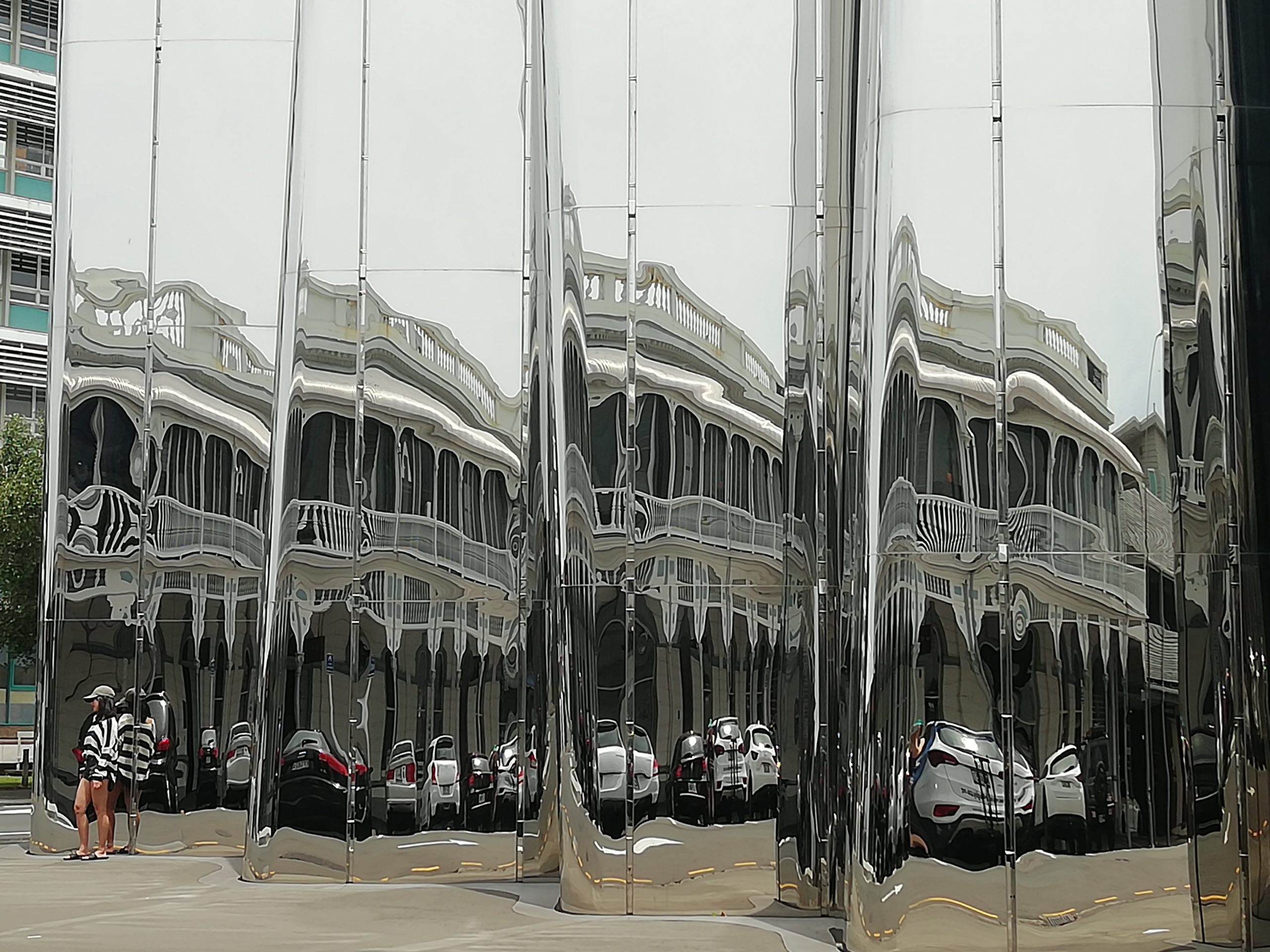
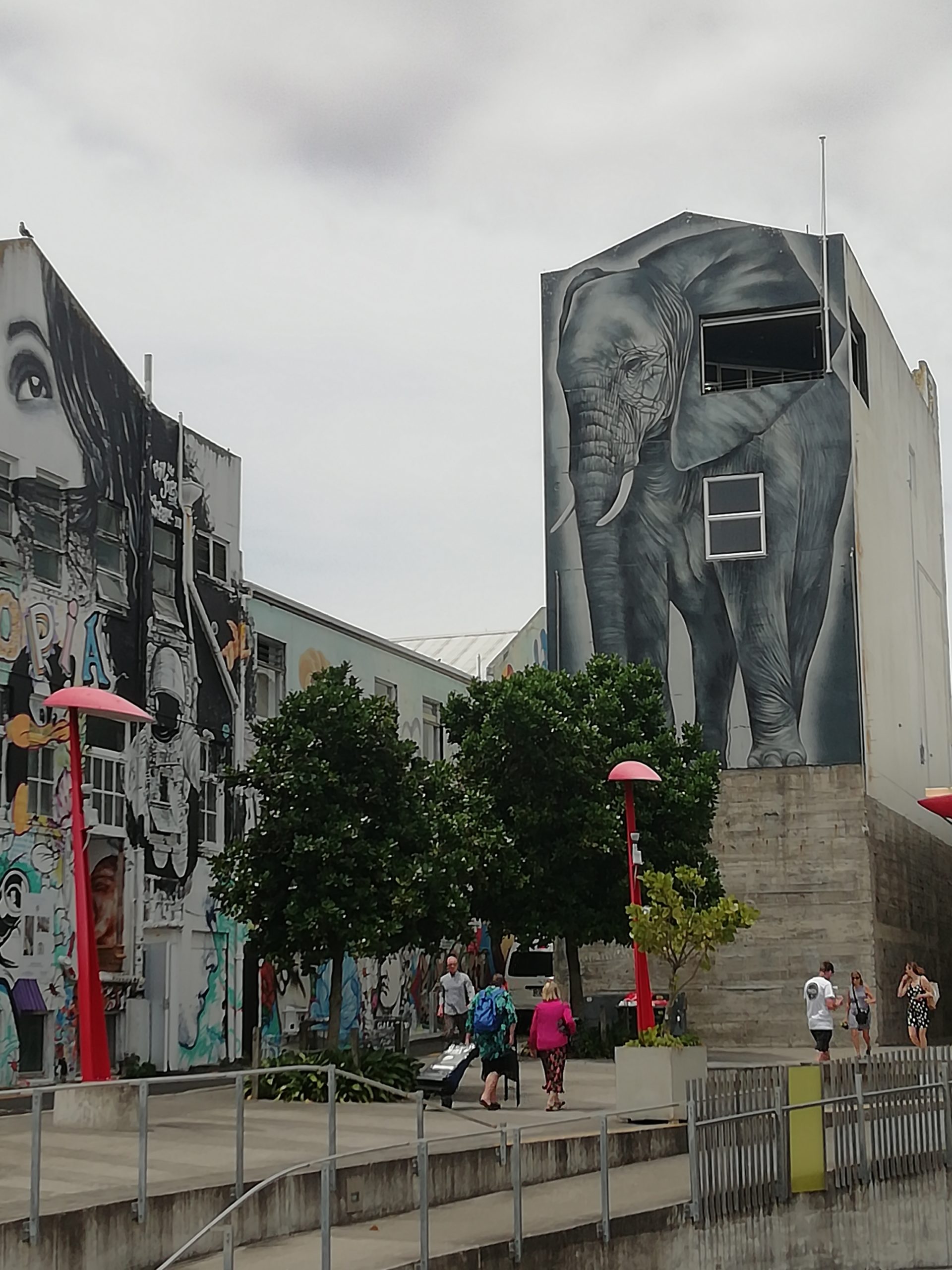
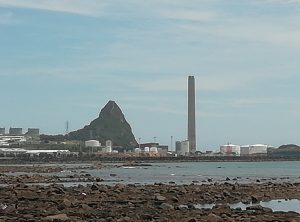
The beauty and the Beast. Controversy in New Plymouth over whether incurring into the huge expense of knocking it down is worth it or not. Some consider it an iconic sight in the city.
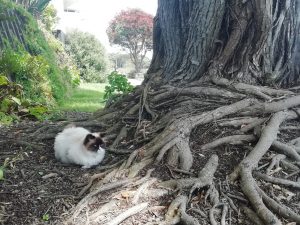 KIWI* cat resting by a Pokutuhawa, NZ Christmas tree, called so because of the red flowers that BLOSSOM** during the Christmas season.
KIWI* cat resting by a Pokutuhawa, NZ Christmas tree, called so because of the red flowers that BLOSSOM** during the Christmas season.
* from New Zealand. This term can be used to refer to things or people, as in my kiwi friend. It’s not offensive.
** produce flowers; another word for bloom.
Mount Taranaki. One of the most symmetrical volcanic cones in the world.
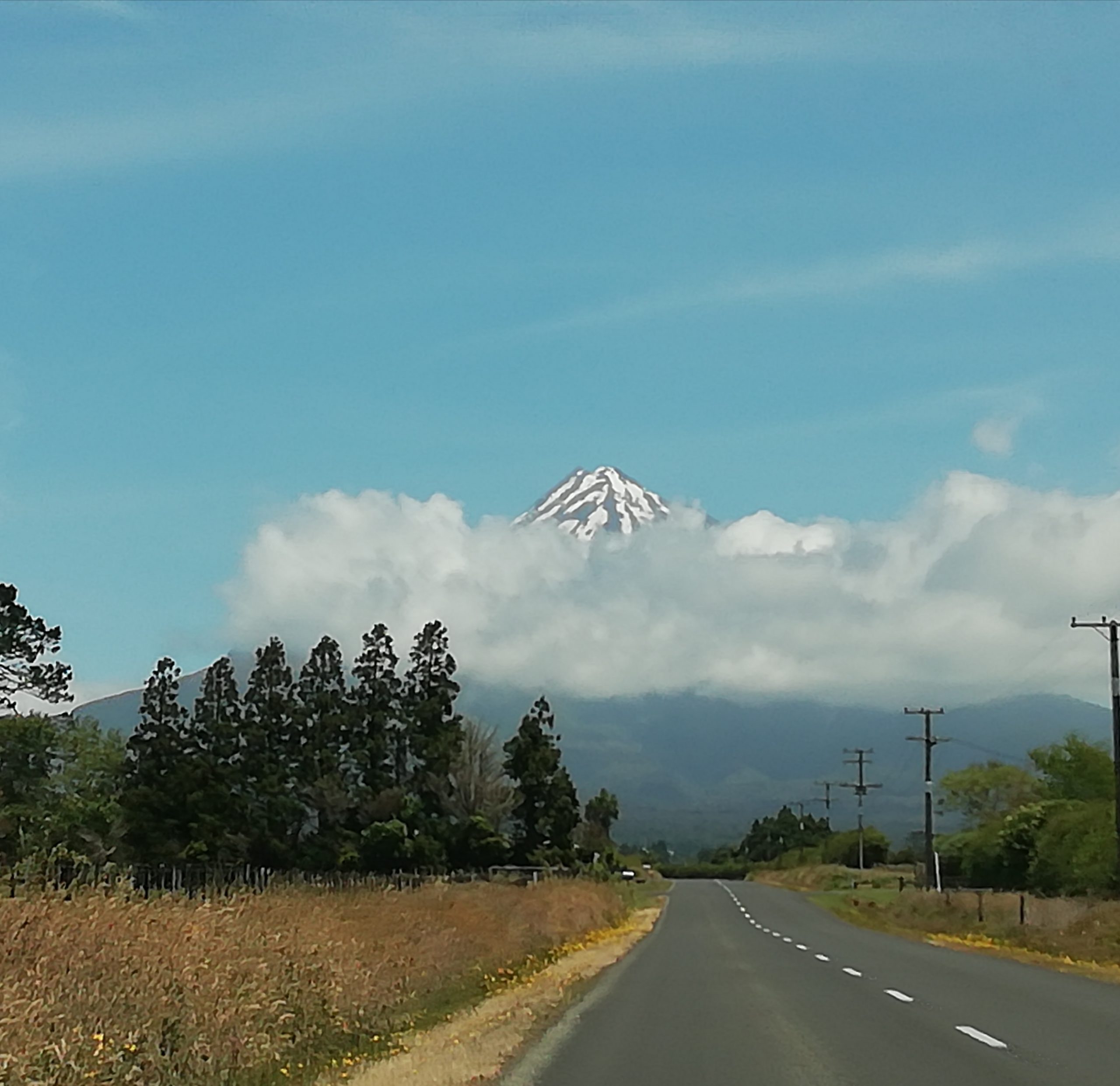
Festival of Lights in New Plymouth. A very special Christmas evening with my friend’s family.
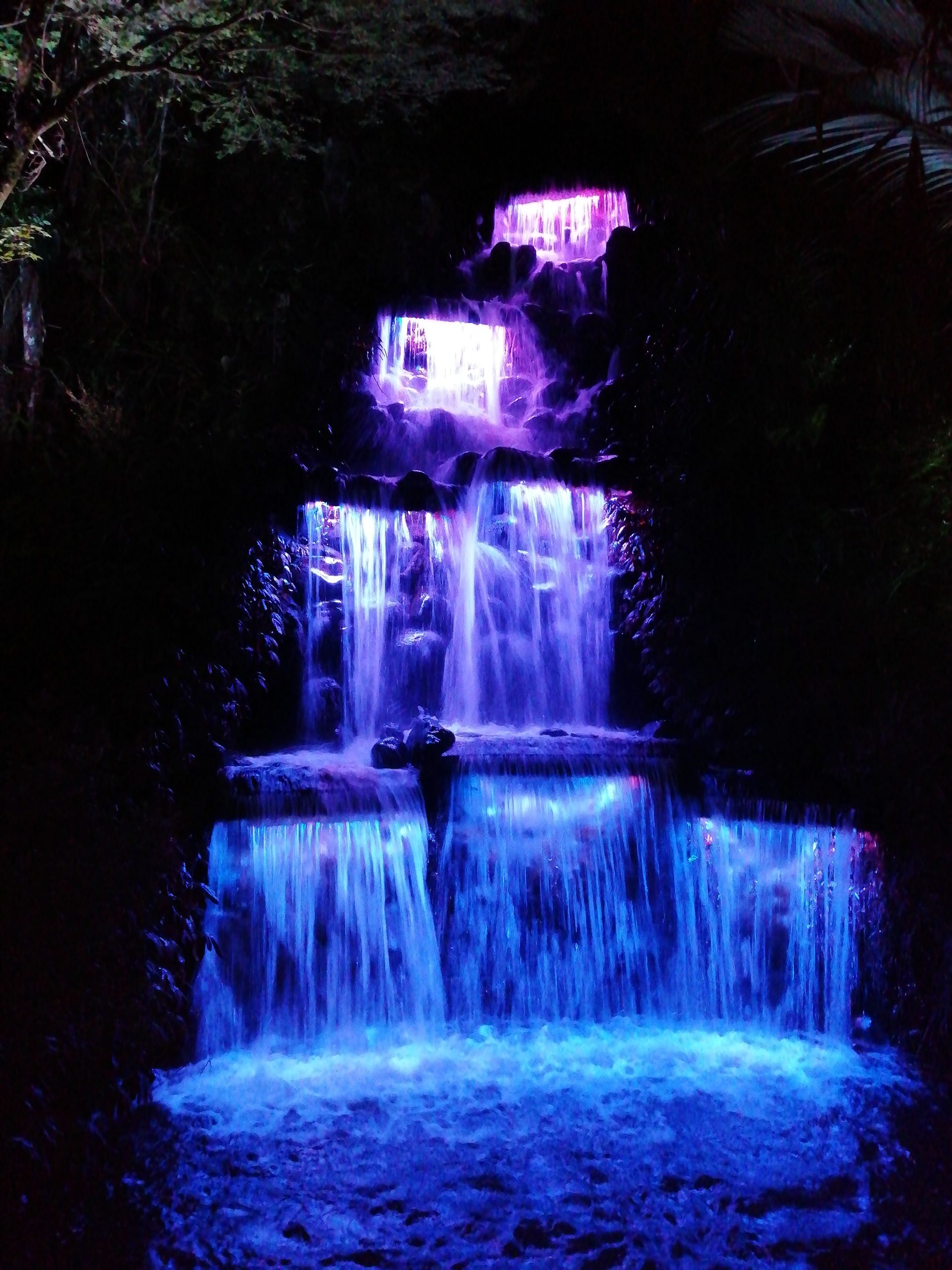
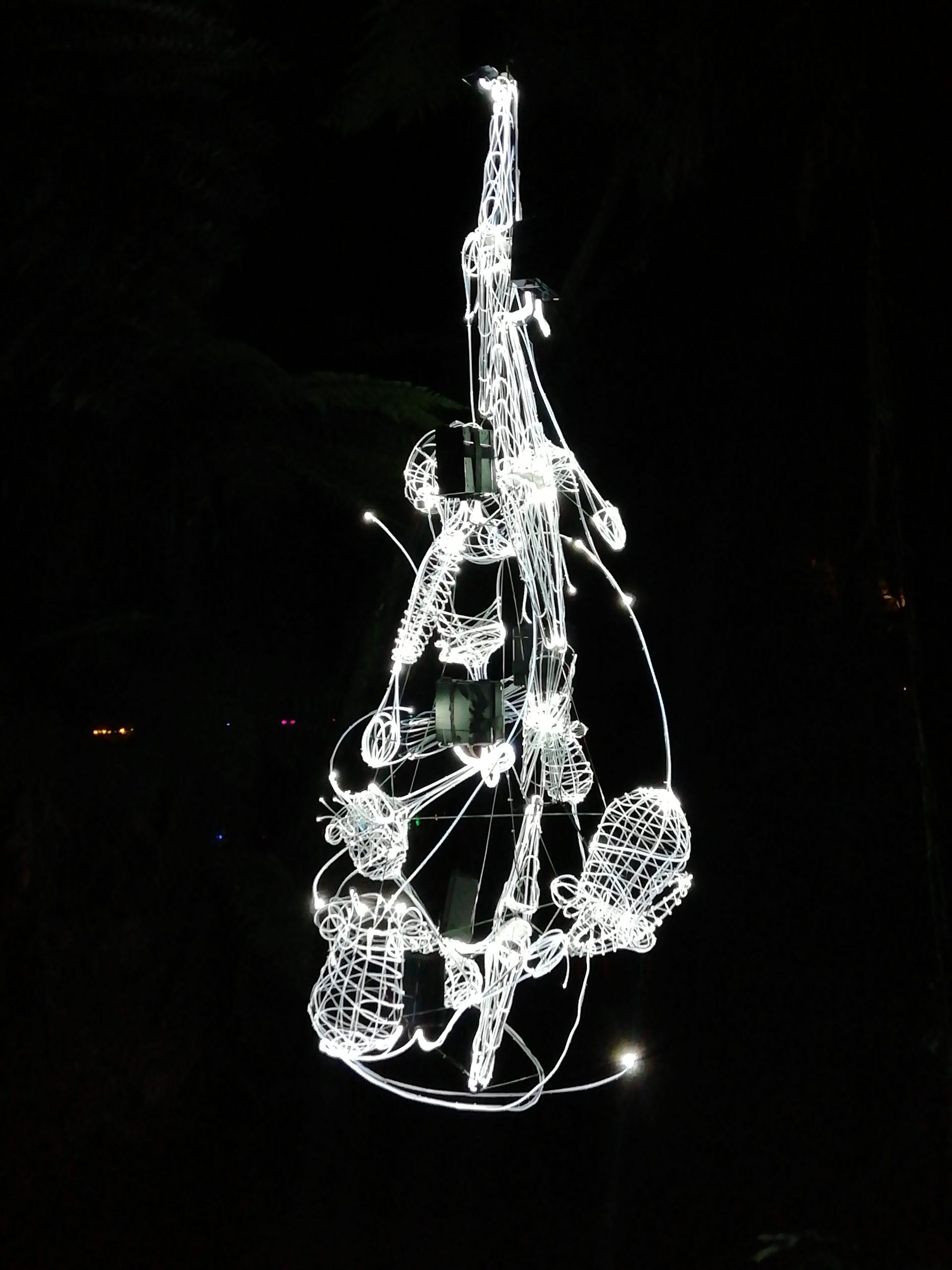
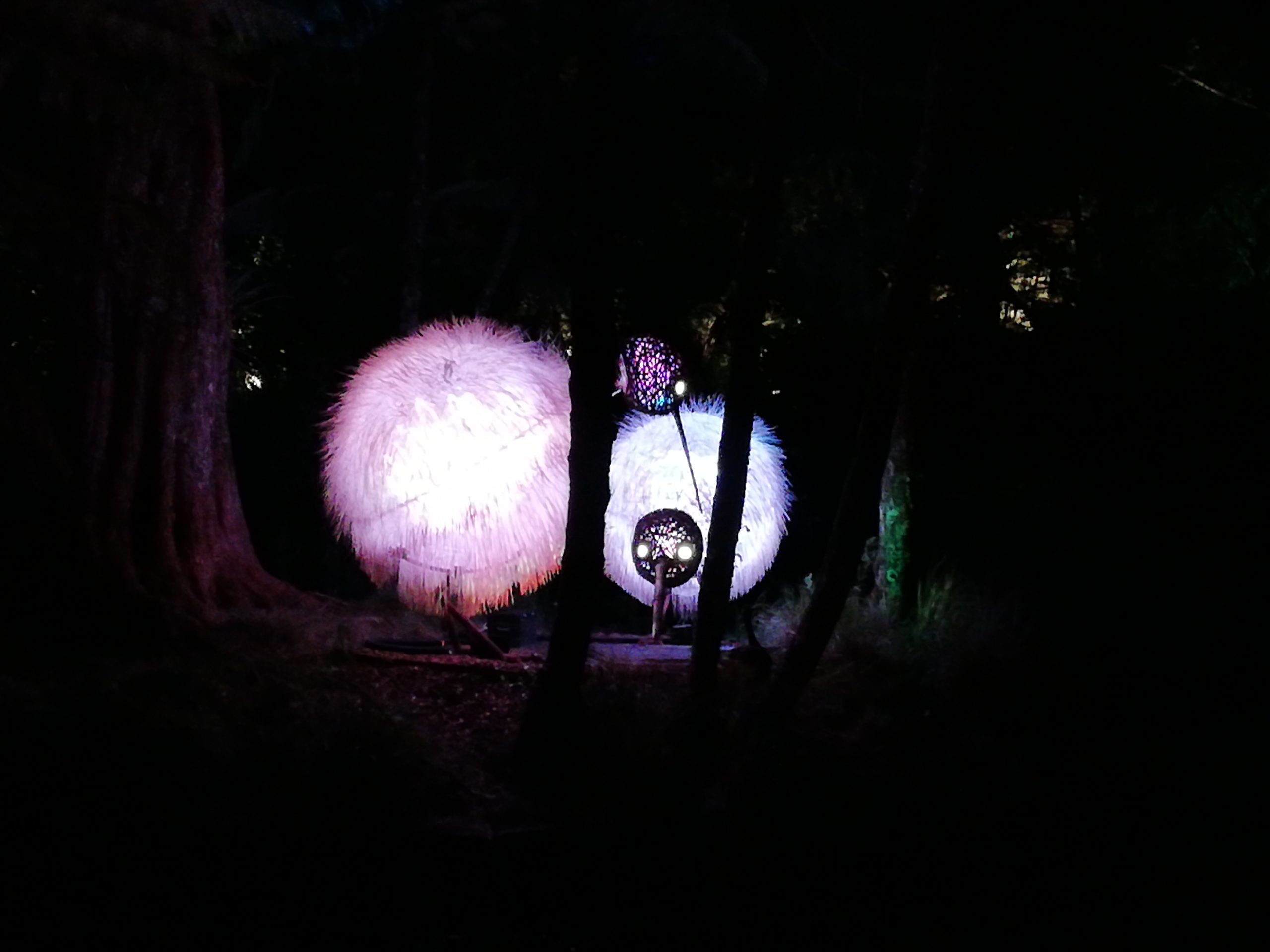
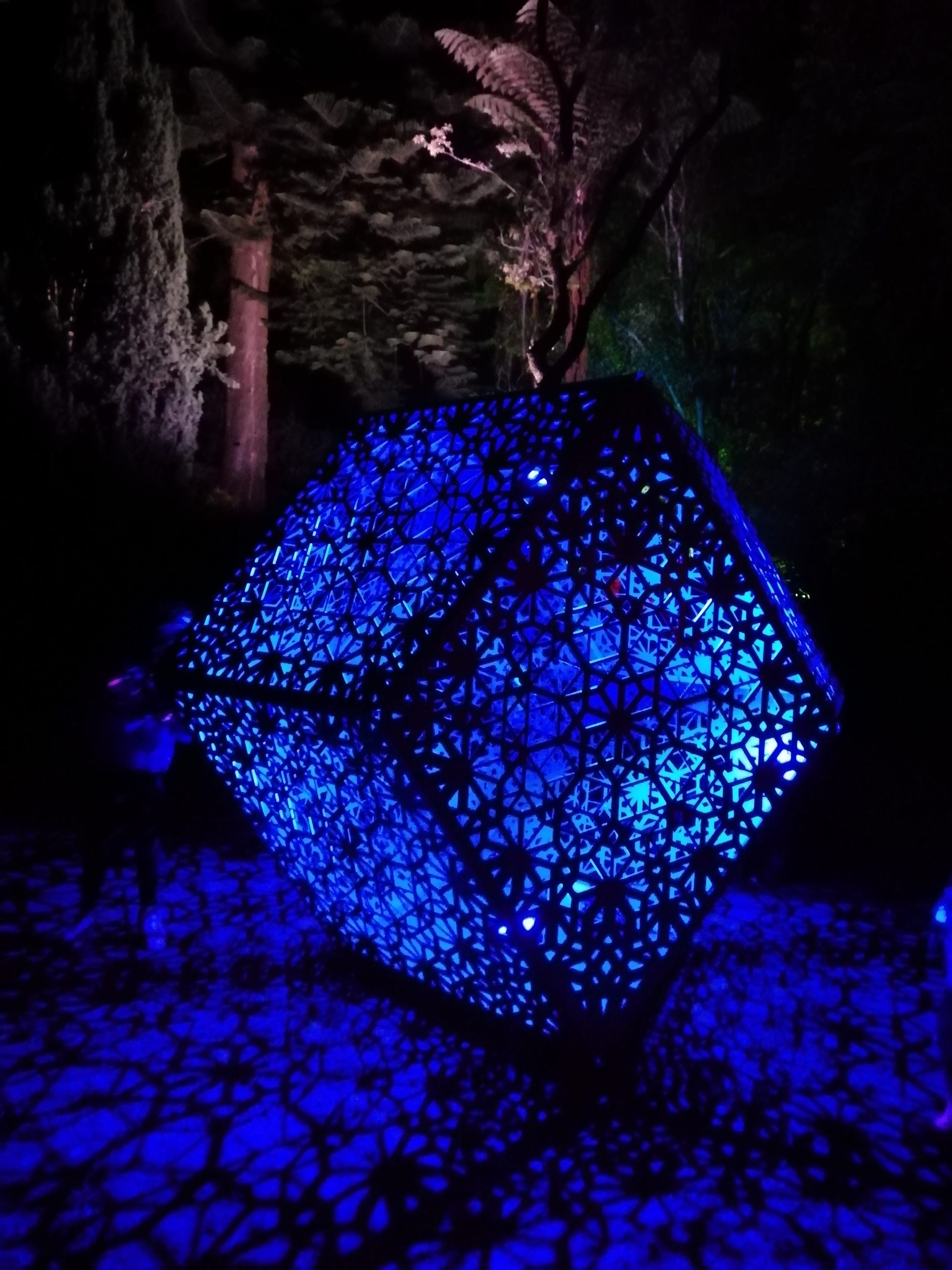
Rural Taranaki
Taking the scenic route towards the Tongariro National Park as we drive through ROLLING* farmland.
* (of land) extending in gentle undulations
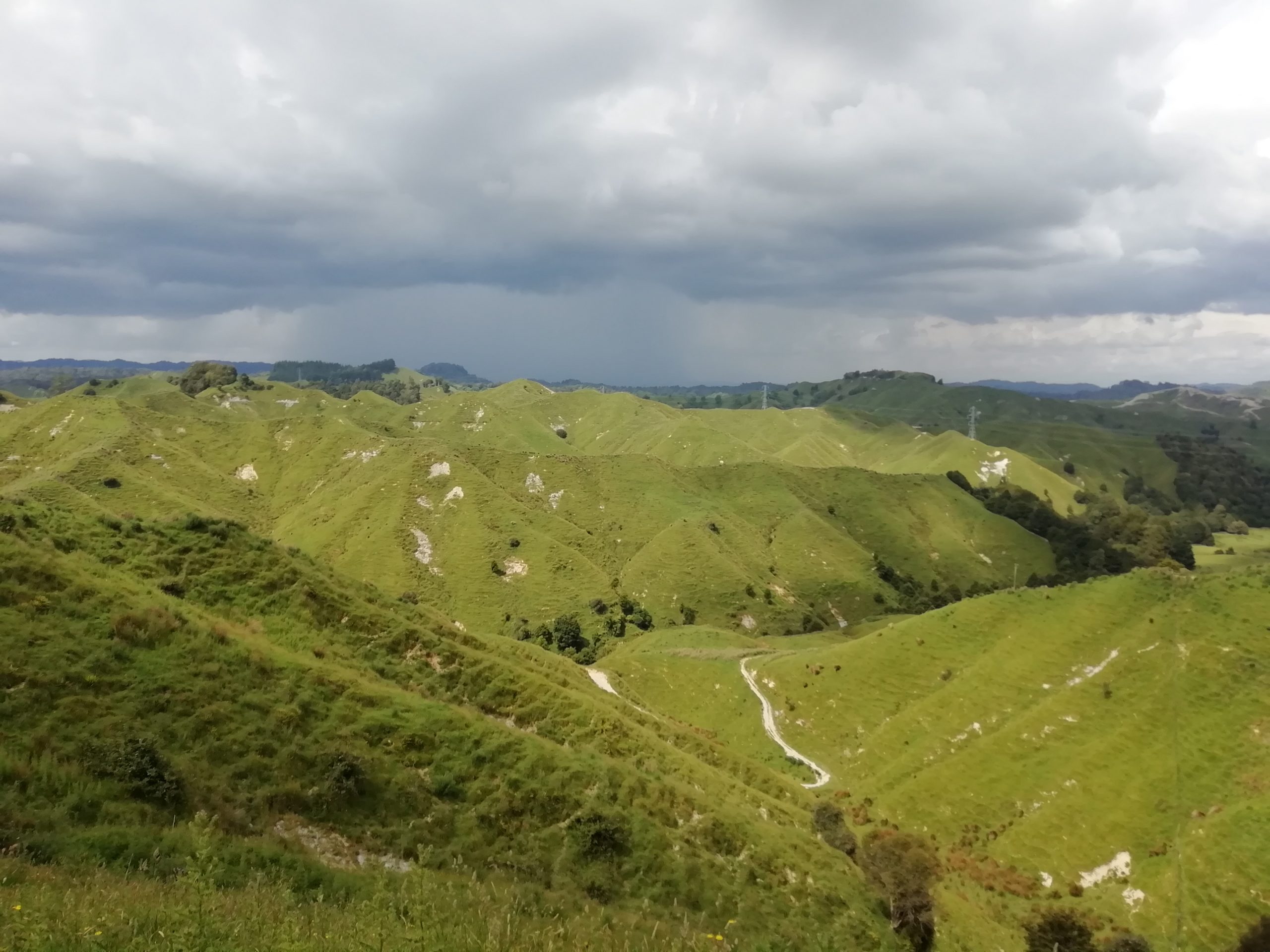
Abandoned church.
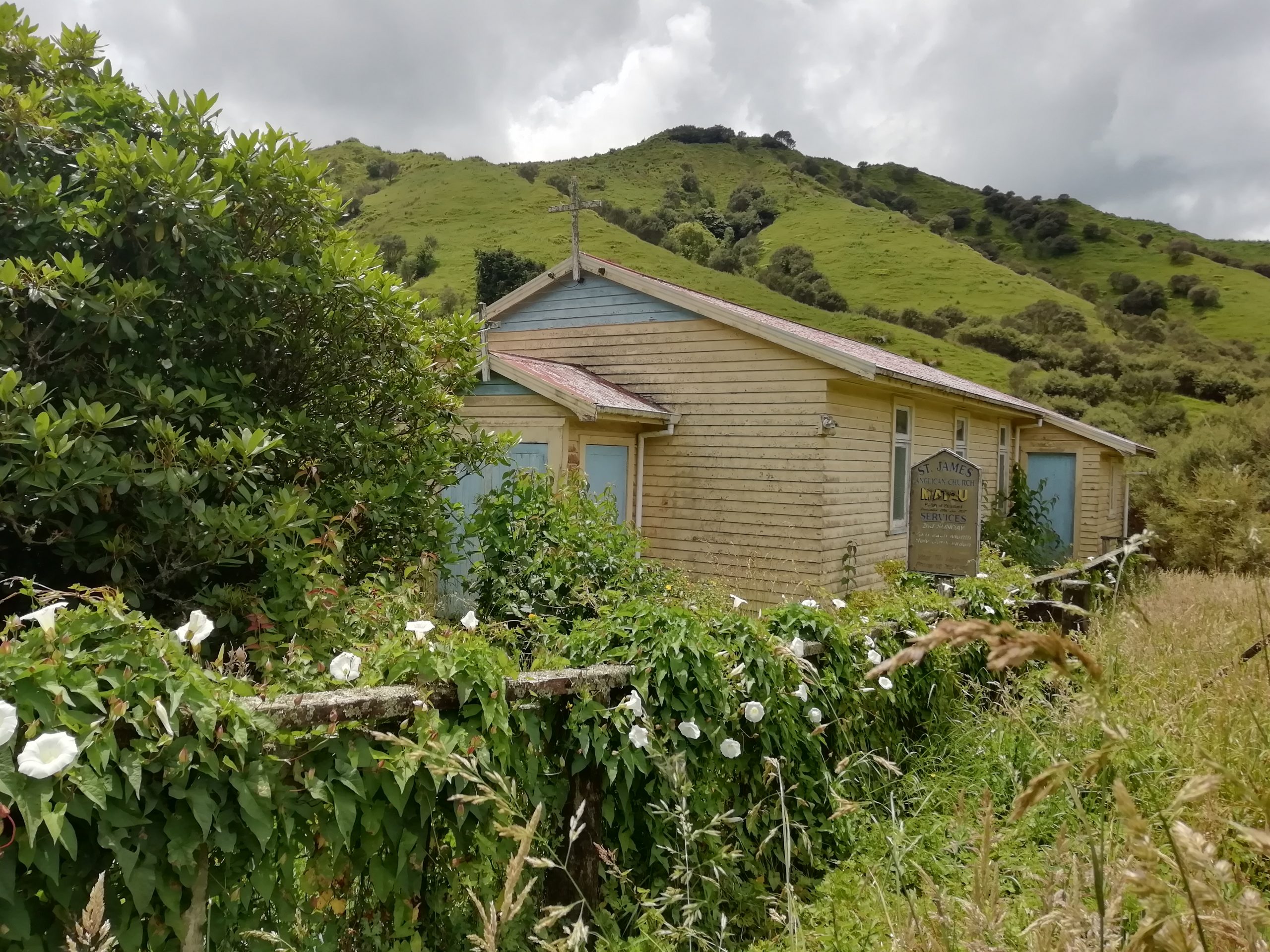
Abandoned rural school
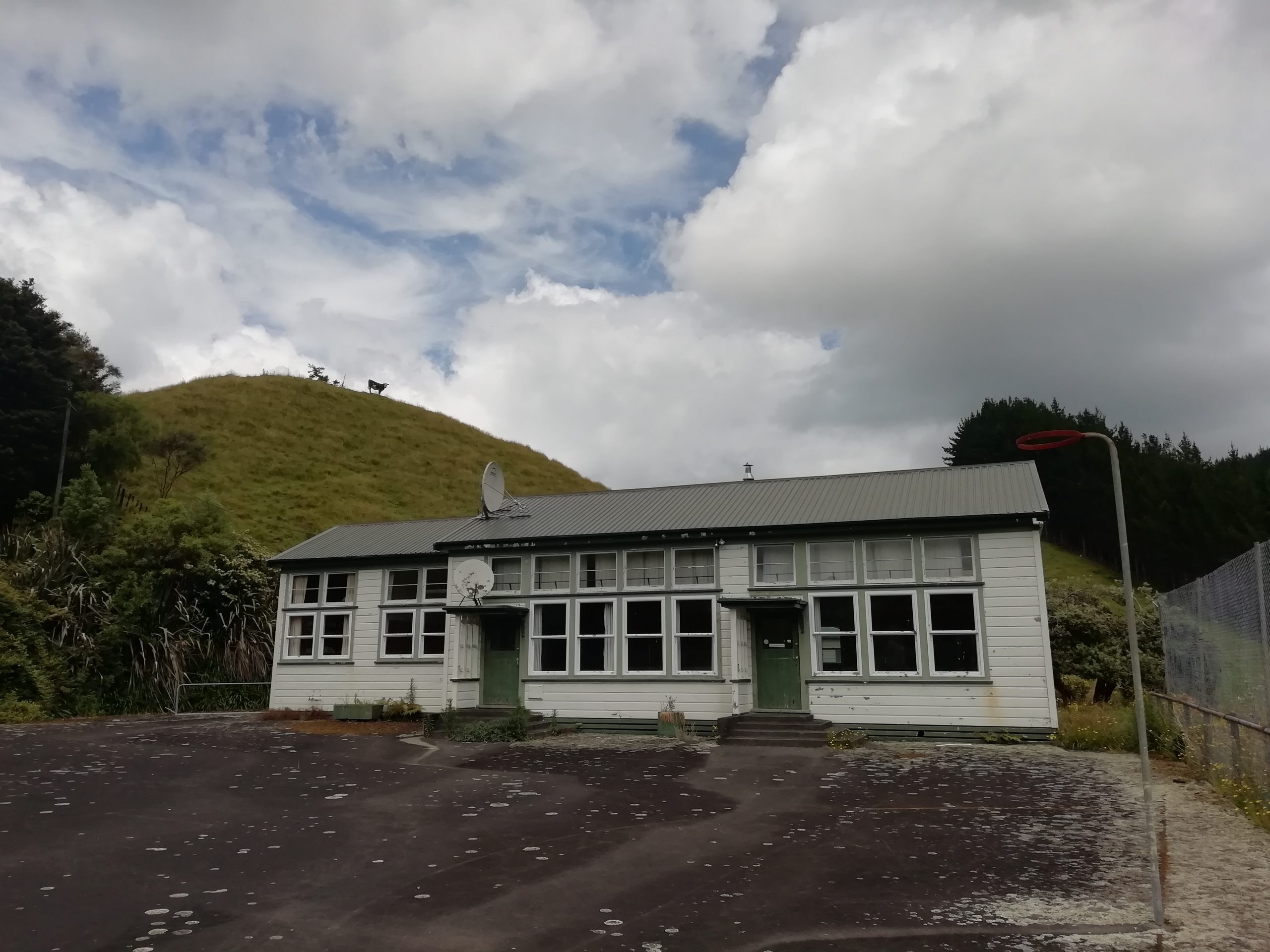
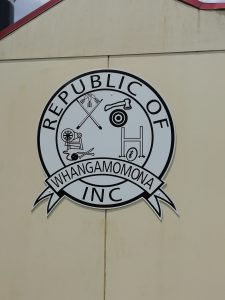 Driving along the stunning Forgotten World Highway, we made a stop at the QUIRKY* little town of Whangamomona, that declared itself a Republic in 1989 and it’s ruled by presidents both animal and human. A goat or a turtle have already held the position. ?
Driving along the stunning Forgotten World Highway, we made a stop at the QUIRKY* little town of Whangamomona, that declared itself a Republic in 1989 and it’s ruled by presidents both animal and human. A goat or a turtle have already held the position. ?
* having peculiar or unexpected traits or aspects.
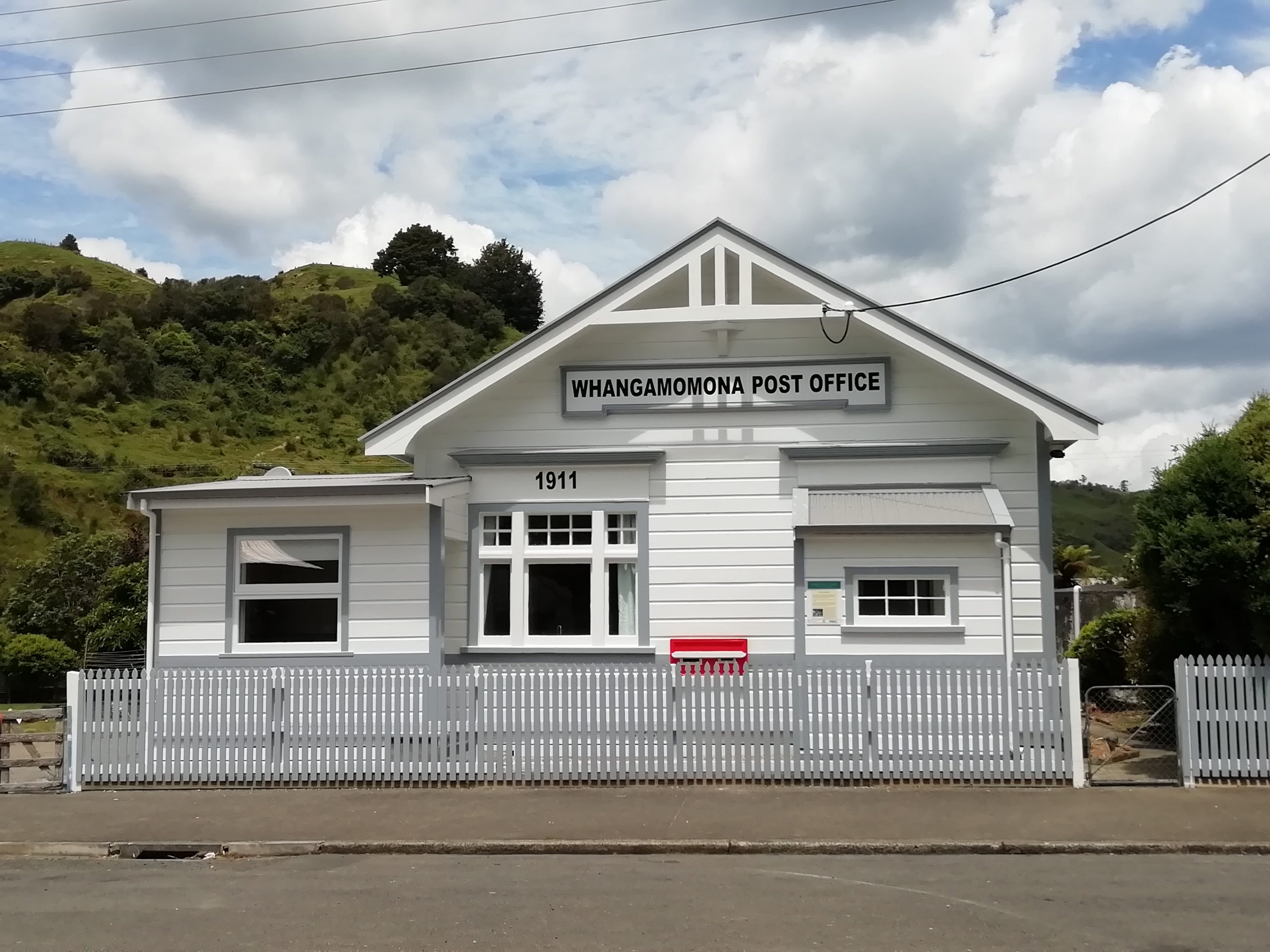
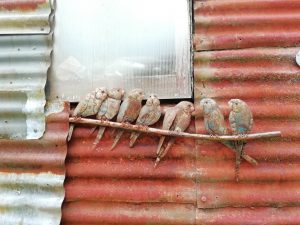
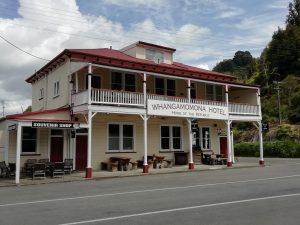
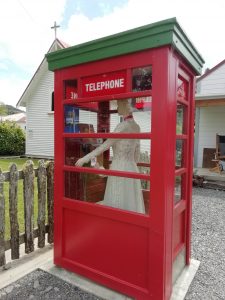
Creepy ?
Breathtaking volcanic scenery in Tongariro Alpine Crossing.
Definitely not an OFF THE BEATEN TRACK* walk, though. WHAT WITH** the flow of shuttle buses coming and going, dropping off people on one end and picking them up on the other.
There must be a good number of inexperienced walkers who venture up there quite unaware of the weather conditions, and without an adequate level of fitness, judging by the warning signs all the way up.
* a place where few people go; far from main roads and towns
** used to talk about the reasons for a particular situation.

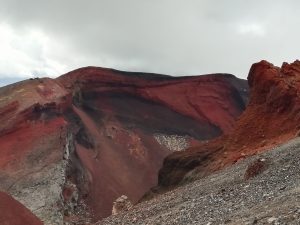

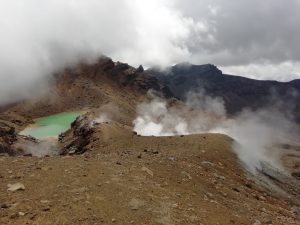
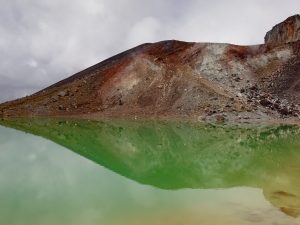
Impressive animal WOODDRIFT* sculptures, made by NZ artist Jack Marsden.
* wood washed up by the sea or a river
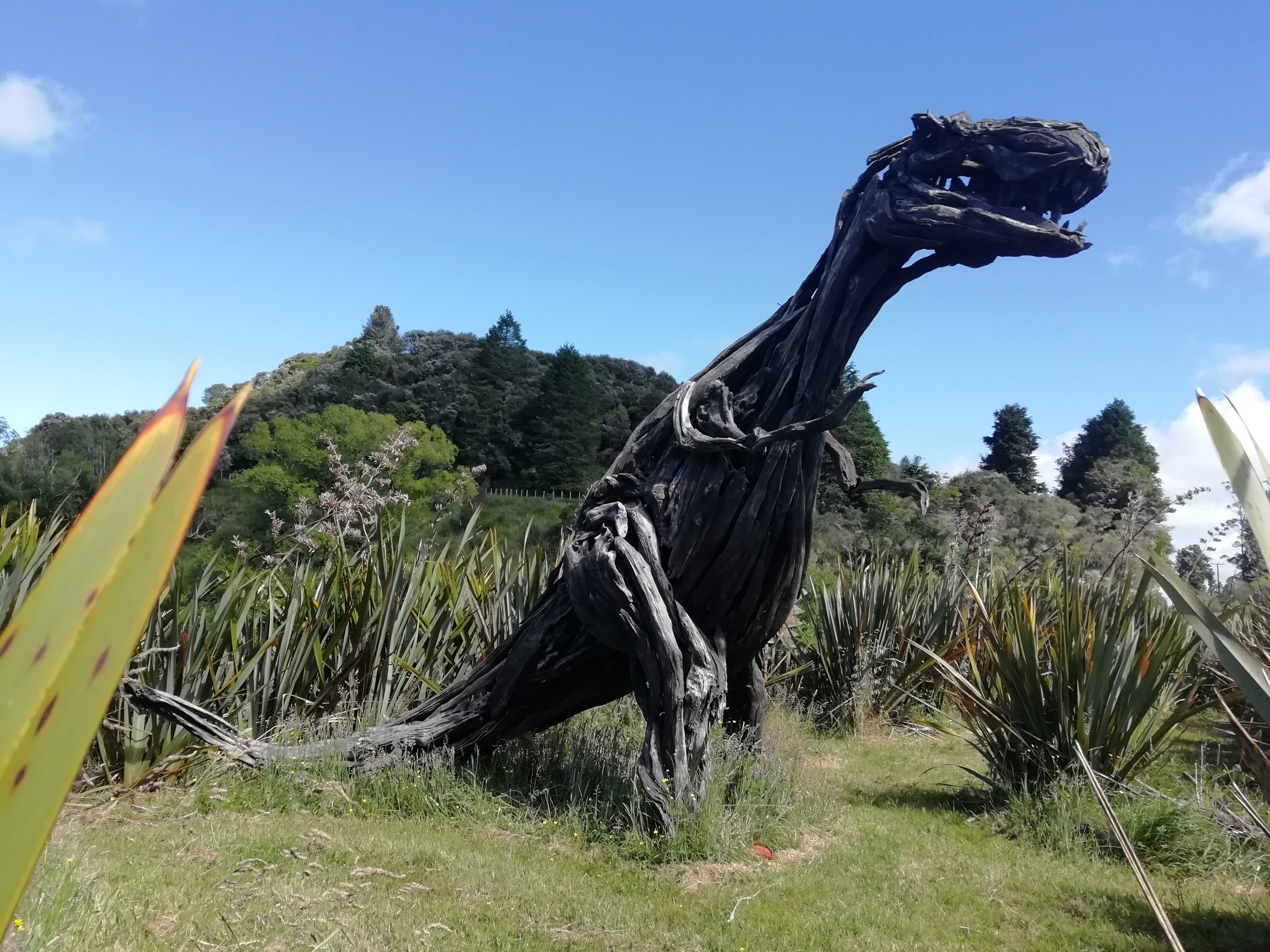

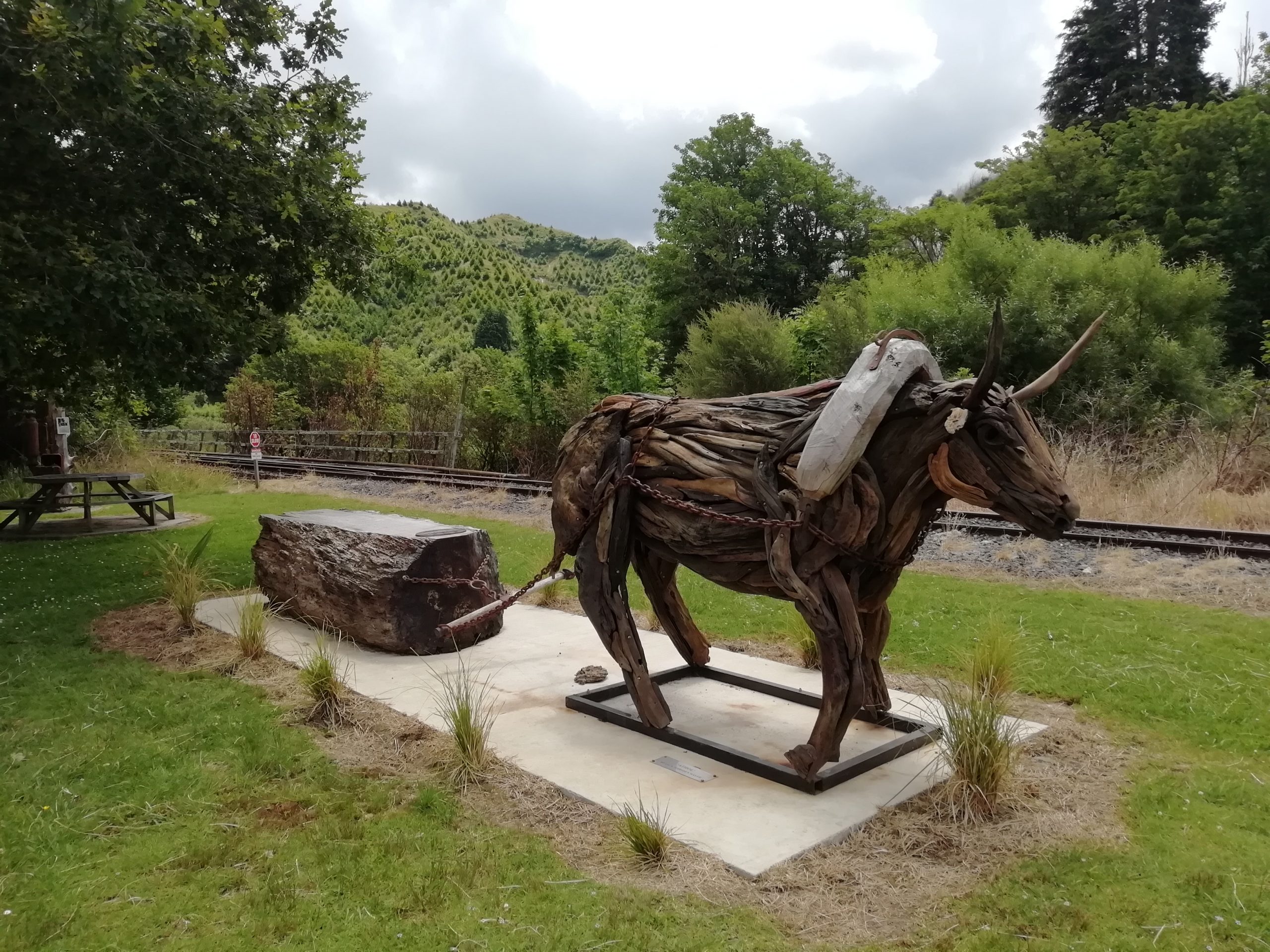
A steaming lake and a bubbling mud pool in Kuirau Park, in the centre of Rotorua. It is open to the public and serves as an introduction to the extraordinary geothermal activity in this area, part of the Taupo volcanic zone. The smell of sulphur hangs in the air.
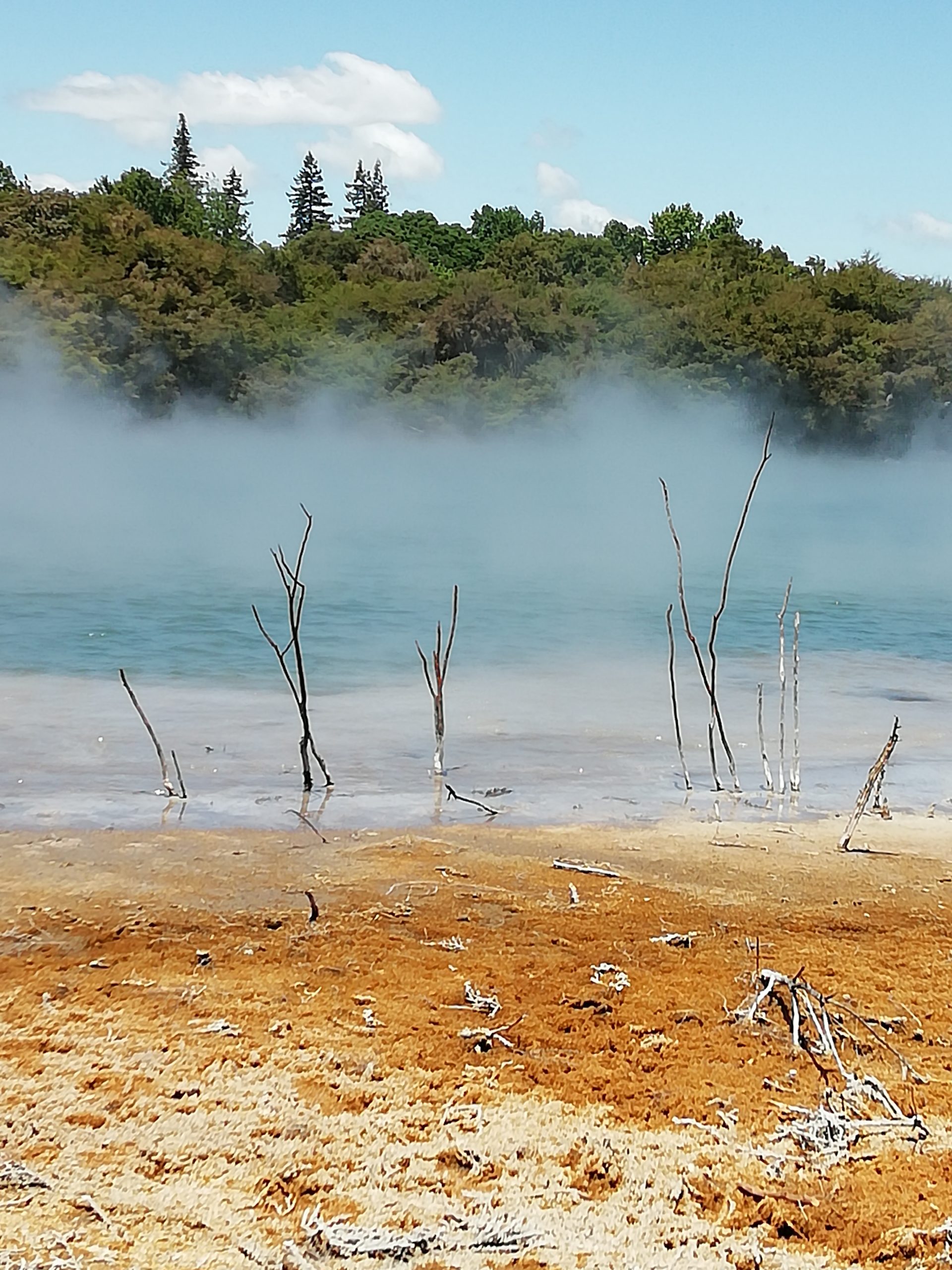
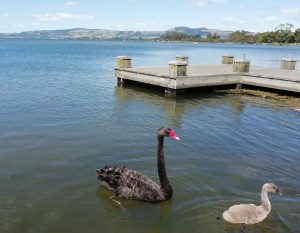 A black swan and its CYGNET* in lake Rotorua (formed from the crater of a large volcano).
A black swan and its CYGNET* in lake Rotorua (formed from the crater of a large volcano).
They were introduced from Australia. The native to NZ black swans were hunted to extinction.
* a swan baby
Impressive Californian redwood tree.
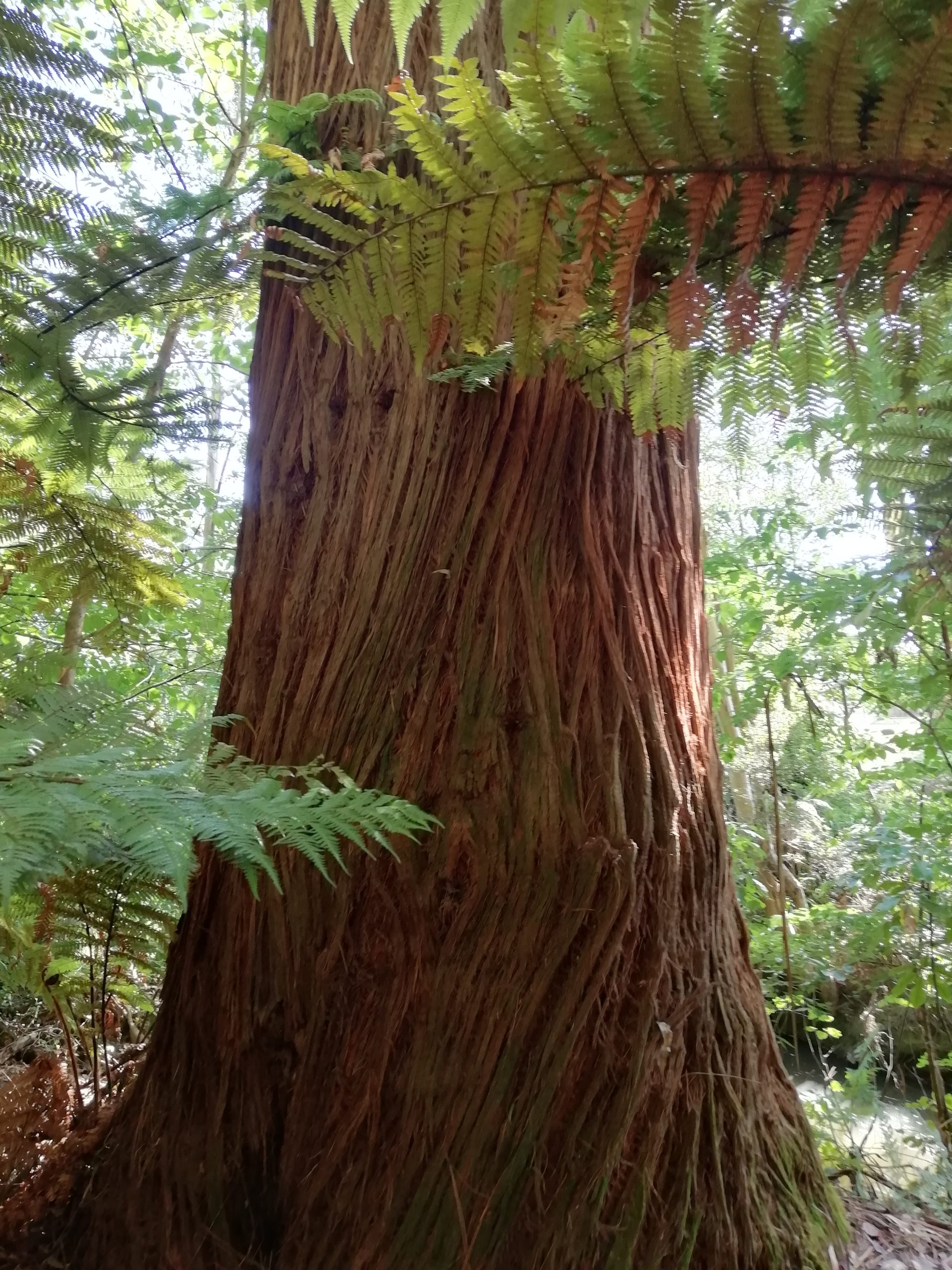
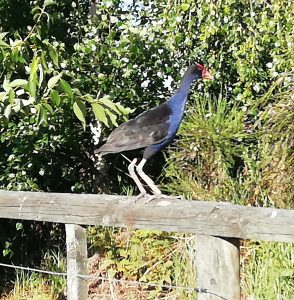 A little bird told me that this big bird I’ve seen is a pukeko. They are also known as SWAMP* hens.
A little bird told me that this big bird I’ve seen is a pukeko. They are also known as SWAMP* hens.
* wetlands
Whakarewarewa
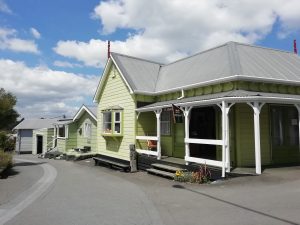
The unpronounceable name of the MĀORI* Living Village in Rotorua where Māori people have lived using its geothermal resources for over 200 years. A guided visit to this village GIVES YOU A great INSIGHT** INTO the rich Māori culture.
Touristy, but still worth it.
* Indigenous people of New Zealand that have a Polynesian origin but developed a distinctive culture over the years after the first settlers arrived in the 14th century.
** helps you understand
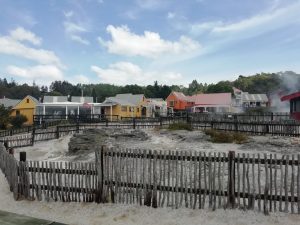 Behind me (no picture) there is a raised garden as they can’t grow vegetables directly on the ground. In the picture, one of the fenced areas that are potentially dangerous for visitors.
Behind me (no picture) there is a raised garden as they can’t grow vegetables directly on the ground. In the picture, one of the fenced areas that are potentially dangerous for visitors.
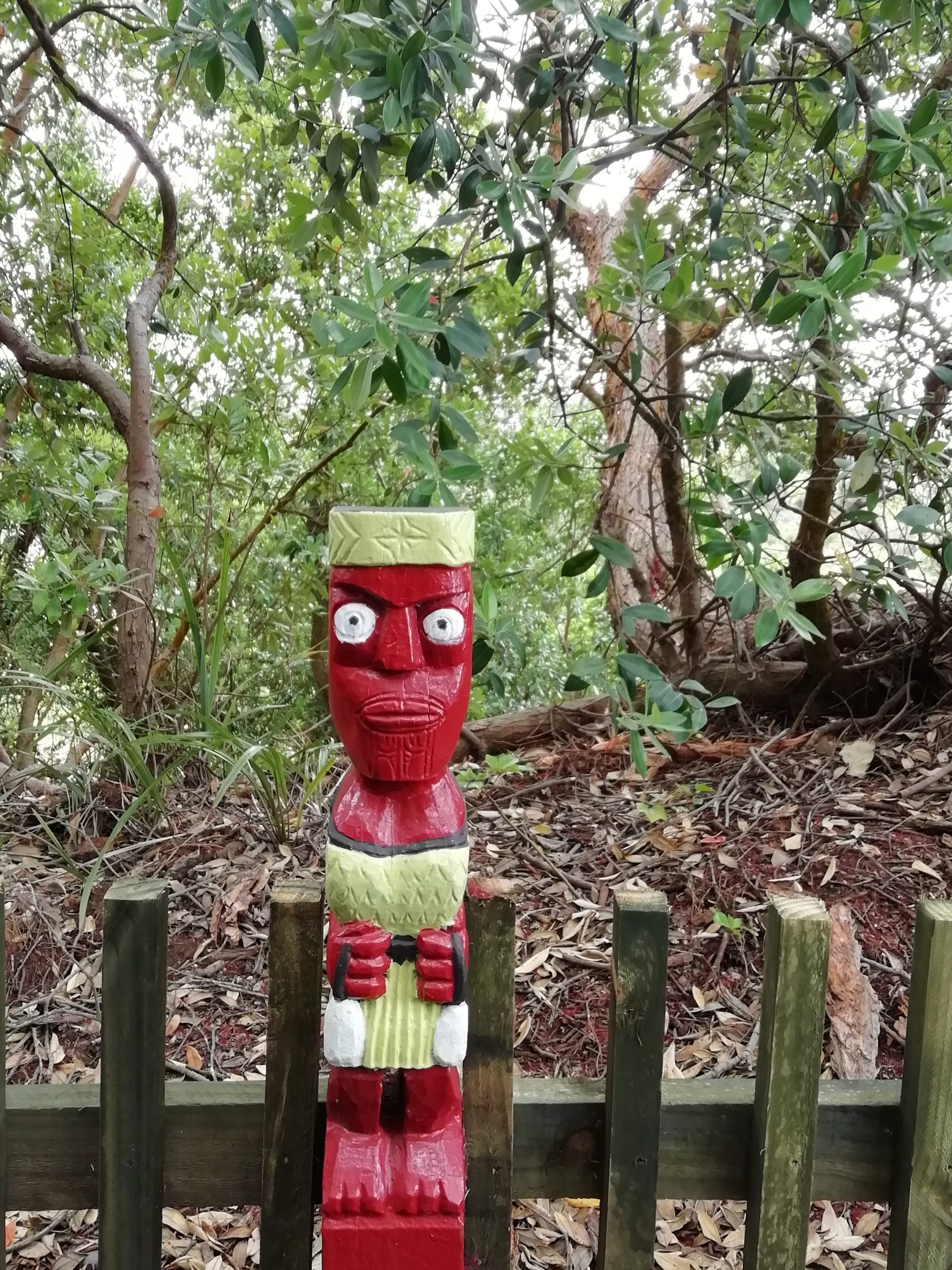
Wooden carved statues near their graveyard; to keep the evil spirits at bay.
They boil veggies in this hot pool, inside a cloth bag like those in the picture. The minerals add flavour.

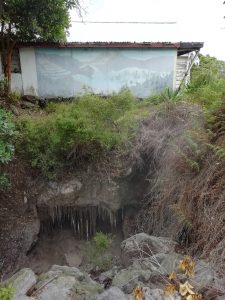
Below this house, there is a growing mud boiling pool. The residents are aware they’ll have to move away one day.
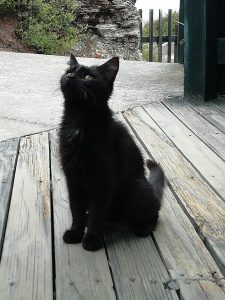 This cute kitten came along with us during the guided tour. Looking in awe at the guide, a wise old Maori man with a great sense of humour.
This cute kitten came along with us during the guided tour. Looking in awe at the guide, a wise old Maori man with a great sense of humour.
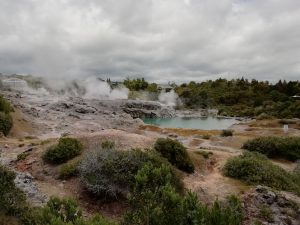 The geysers, inactive when we passed by, fill this pool with warm water. This is the local swimming pool where kids swim and play.
The geysers, inactive when we passed by, fill this pool with warm water. This is the local swimming pool where kids swim and play.
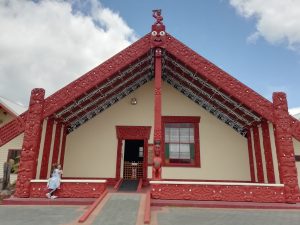
A wharenui or meeting house. Considered sacred and out of bounds for tourists that day.
Wai-o-tapu Scenic Reserve
Several amazing manifestations of geothermal activity in Wai-o-tapu Scenic Reserve, in the Taupo volcanic zone. I’m in total awe!
 The Champagne pool is the largest hot spring in NZ. The orange rim around the pool gets its colour from the minerals arsenic and sulphur.
The Champagne pool is the largest hot spring in NZ. The orange rim around the pool gets its colour from the minerals arsenic and sulphur.
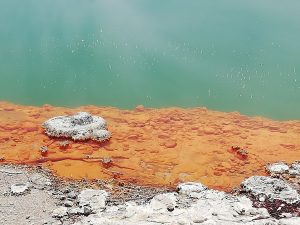
The bubbles caused by carbon dioxide give the pool the Champagne like effect. 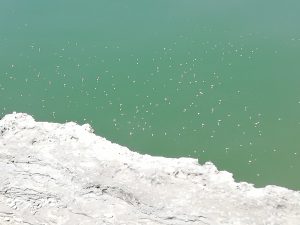
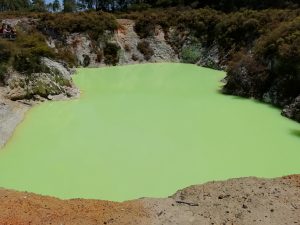
No, it’s not radioactive and yes, it’s natural. No editing. This strikingly unusual colour results from the reflection of the sun on the minerals floating on the surface.
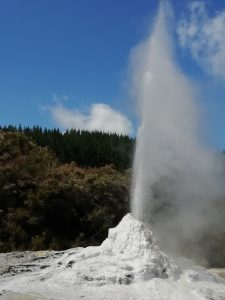
Lady Knox geyser
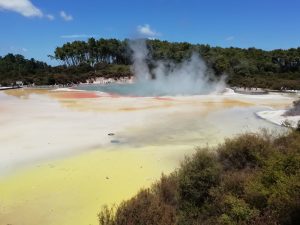
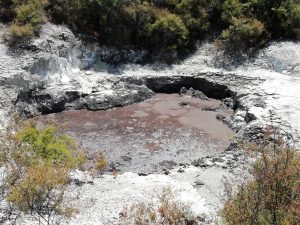
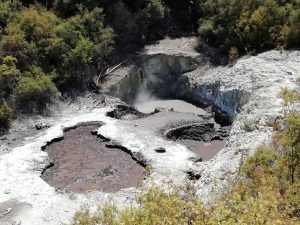

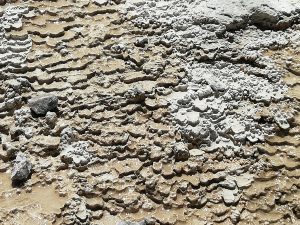 A close-up of the deposits on the Sinter terraces.
A close-up of the deposits on the Sinter terraces.
Bay of Islands and Paihia ???
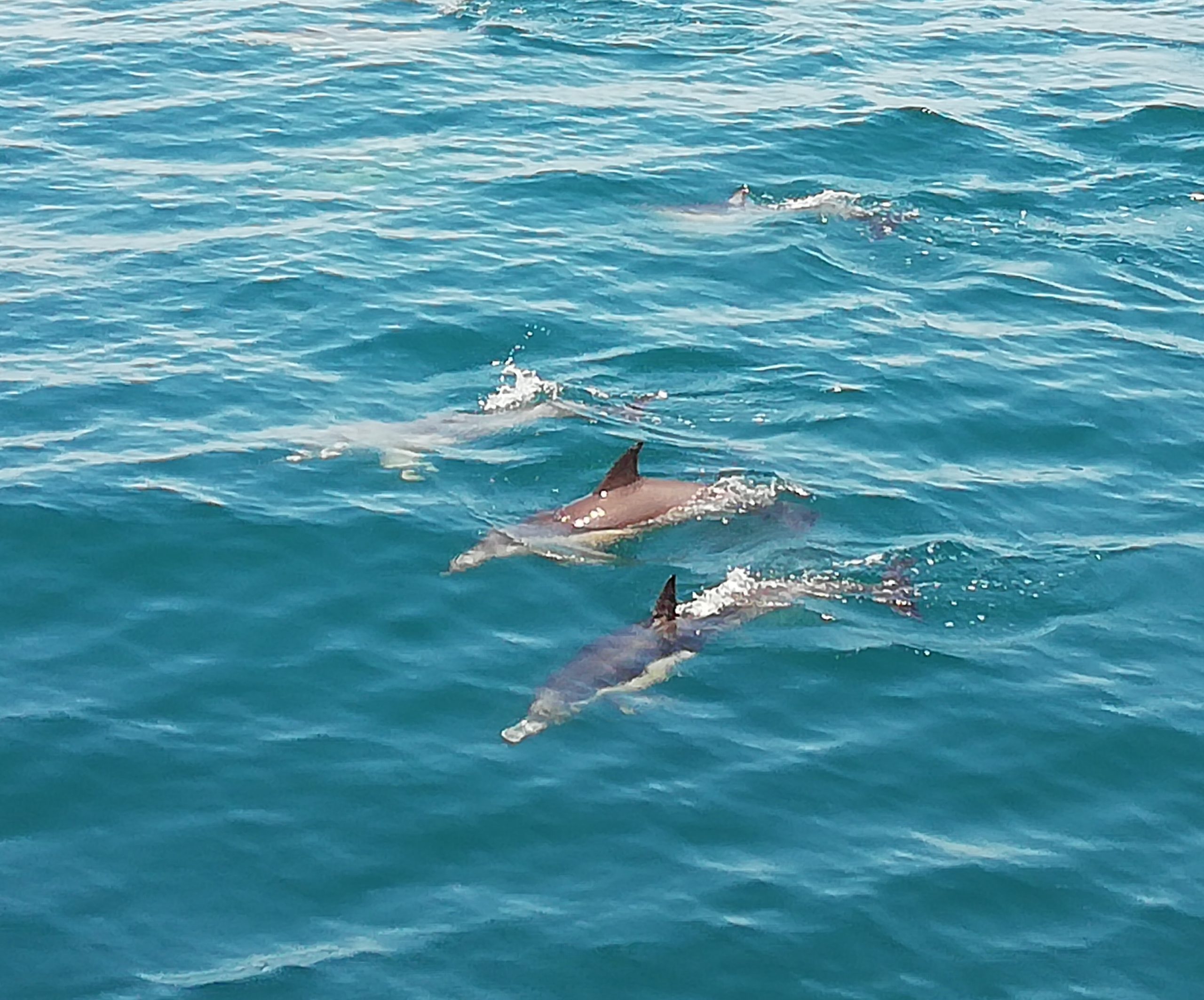
 Dolphins, VESSELS* of all kinds, basaltic rock formations, campsites only accessible by boat, secluded beaches, 144 islands, a summery relaxed atmosphere and lots of interesting travellers staying in hostels. And last but not least, history. The Treaty of Waitangi between Maori tribes and the Crown British was signed here.
Dolphins, VESSELS* of all kinds, basaltic rock formations, campsites only accessible by boat, secluded beaches, 144 islands, a summery relaxed atmosphere and lots of interesting travellers staying in hostels. And last but not least, history. The Treaty of Waitangi between Maori tribes and the Crown British was signed here.
* anything that floats on the water that is used as a means of transport on water.
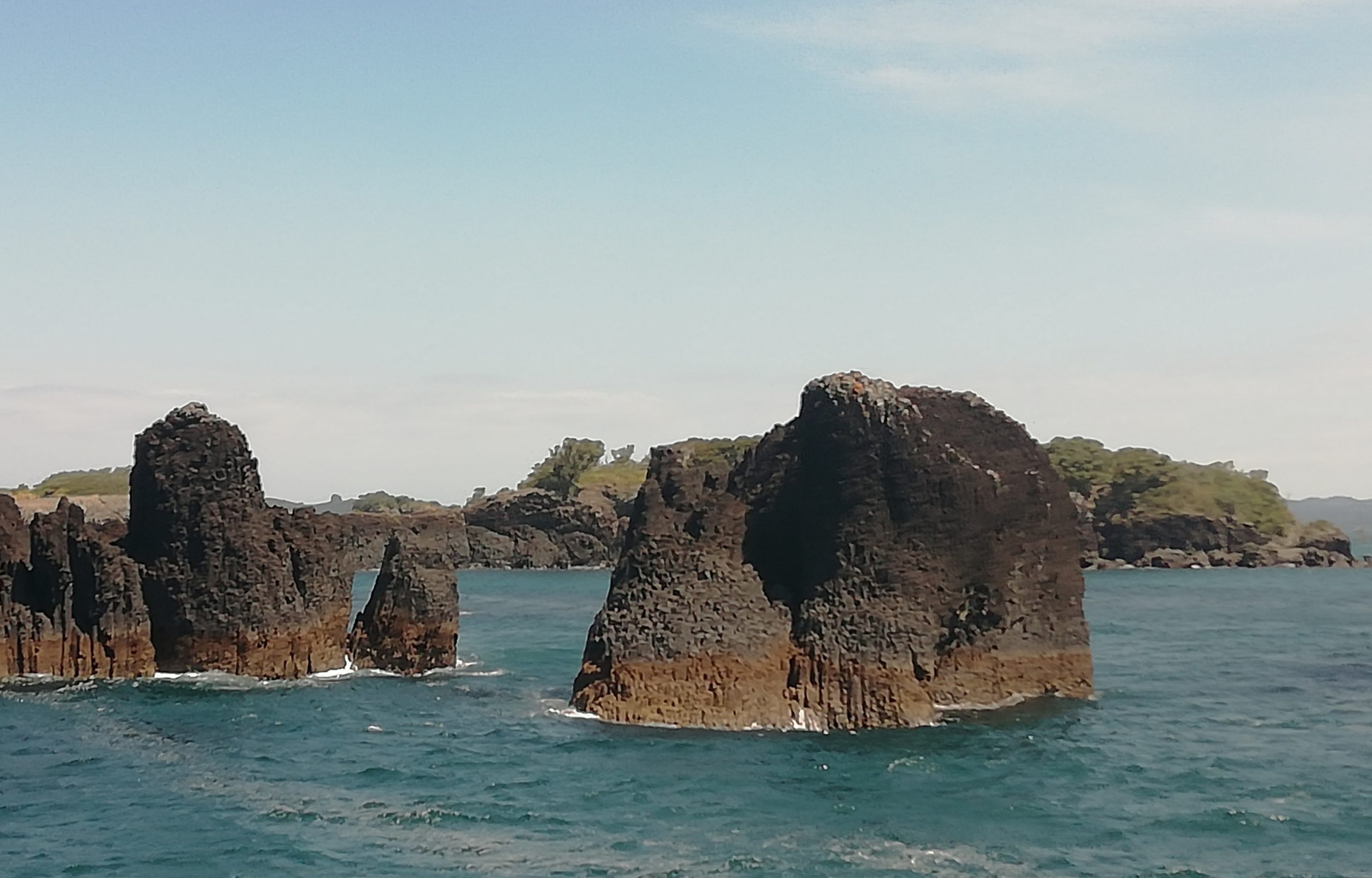
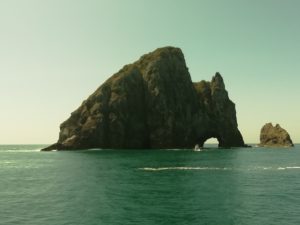
Popularly known as Hole in the Rock, this RUGGED* rock situated on the edge of the Bay of Islands in the Pacific Ocean was named Piercy island by Captain Cook to honour a Lord of the Admiralty.
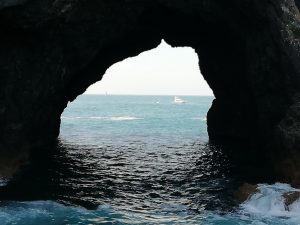
Mãori legend has it that warriors paddled through the hole before a battle, one at a time. If water DRIPPED** on them, it was regarded as a sign of good luck.
* having a broken and uneven surface
** when water drips somewhere, it falls in individual drops.
Ninety-mile beach is a registered highway. A bit of a bumpy ride to access the beach road.
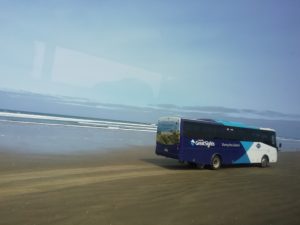
But it’s actually about 55 miles in length. Back in the day, it took farmers and their cattle three days to go from one end to the other. They estimated that their cattle could walk 30 miles per day but they OVERLOOKED* the fact that walking on sand is slower than walking on solid ground.
* failed to notice
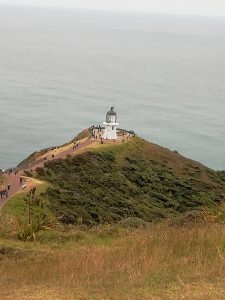 Cape Reinga, up North, where the Tasman sea and the Pacific ocean collide.
Cape Reinga, up North, where the Tasman sea and the Pacific ocean collide.
A place of spiritual significance for Mãoris as this is where they believe the spirits of the dead descend into the underworld.
A bit of a hazy day, probably DOWN TO* the smoke coming from the bush fires in Australia.
* because of
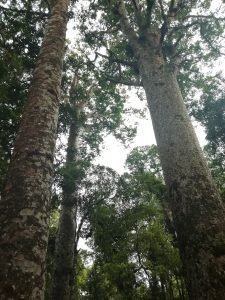
A forest of giant KAURIS* in Northland.
* a native tree to NZ, heavily protected. Kauri forests are among the most ancient in the world.
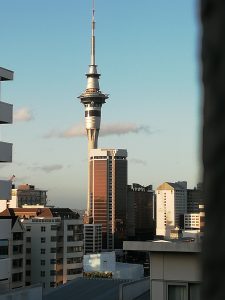
A flying visit to Auckland, the City of Sails, built on a dormant volcanic field with more than 50 volcanoes
The iconic Sky Tower is a telecommunications and observation tower that also BOASTS* a 192 metre-high platform where the SkyWalk and the SkyJump take place if you have 375 dollars to spare.
* (of a place) to possess a feature that is a source of pride.
Shown around Waihehe island by Quilla, lovely New Zealander I met at the start of my trip back in the beginning of December.

WHERE THERE IS A WILL, THERE IS A WAY. *
Horizontally, diagonally and up up up. Bushwalk in Waiheke Island, off the coast of Auckland.
* No matter how difficult something is, it can be achieved one way or another.

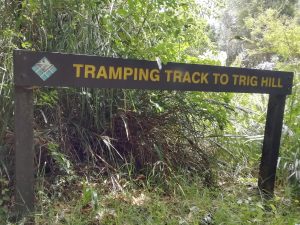
My last TRAMPING* track in New Zealand.
* tramping is a kiwi word for walking or hiking.

Goodbye New Zealand ?
This country has not only LIVED UP TO* my expectations but also exceeded them. ?
* fulfilled
